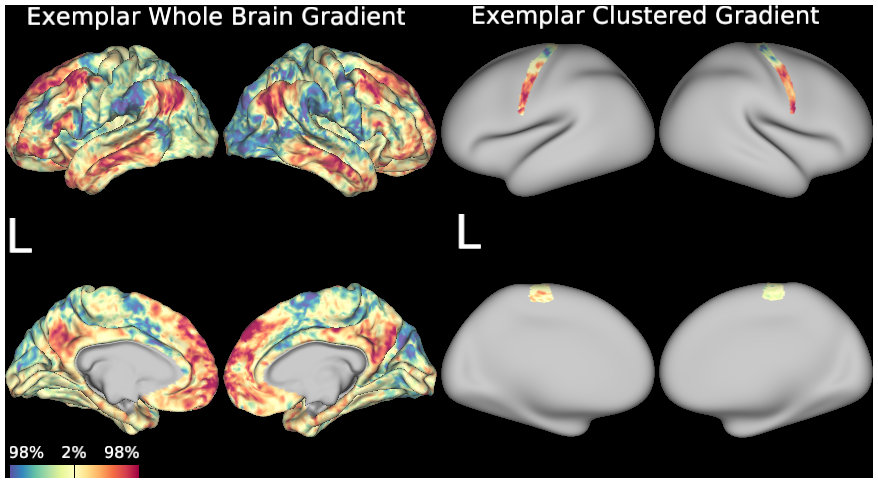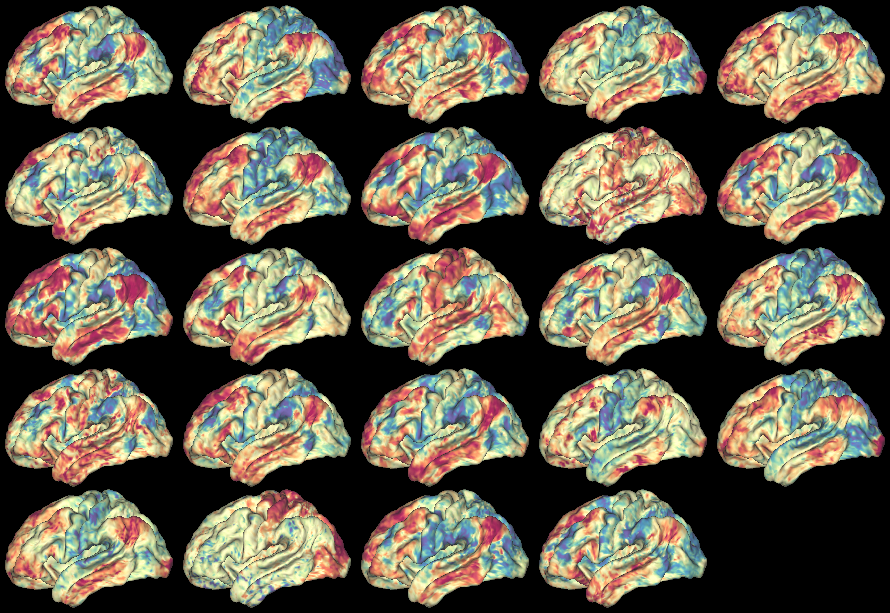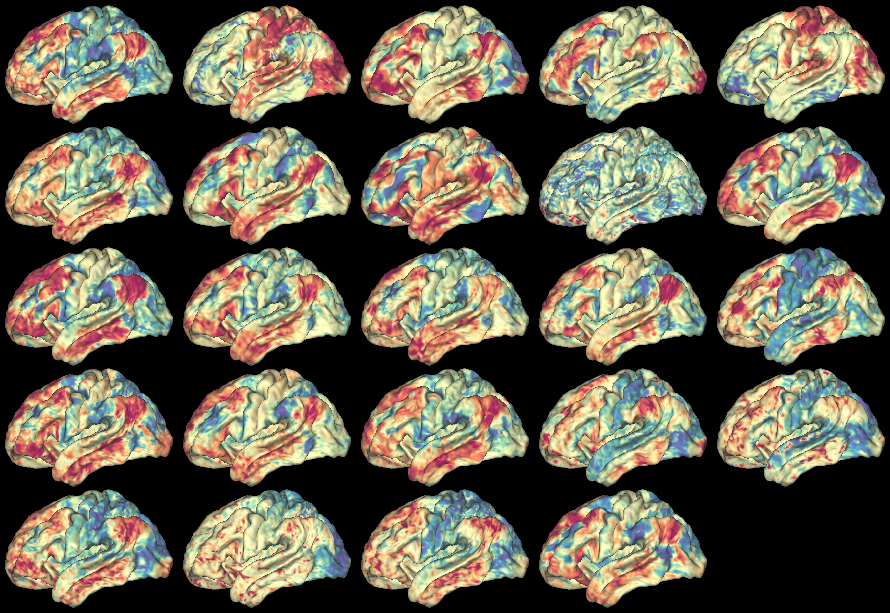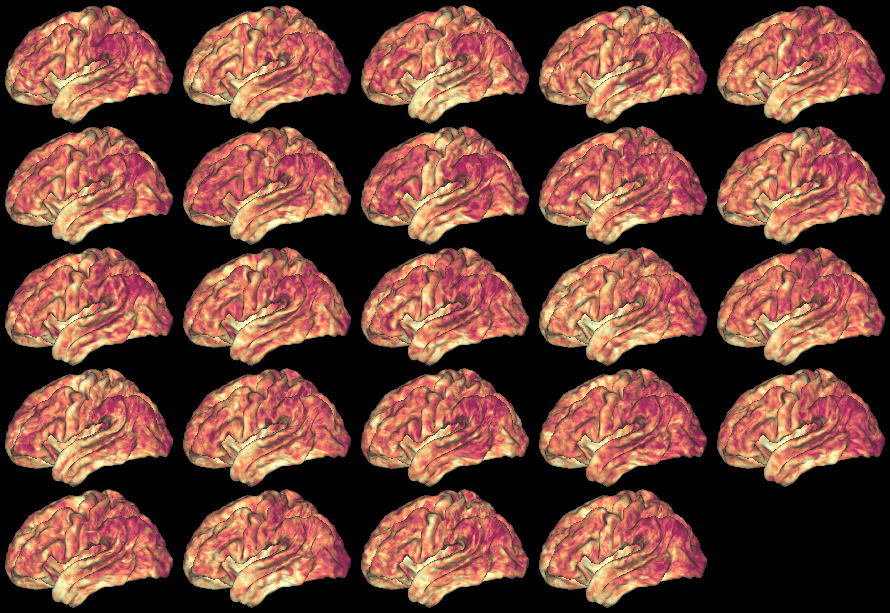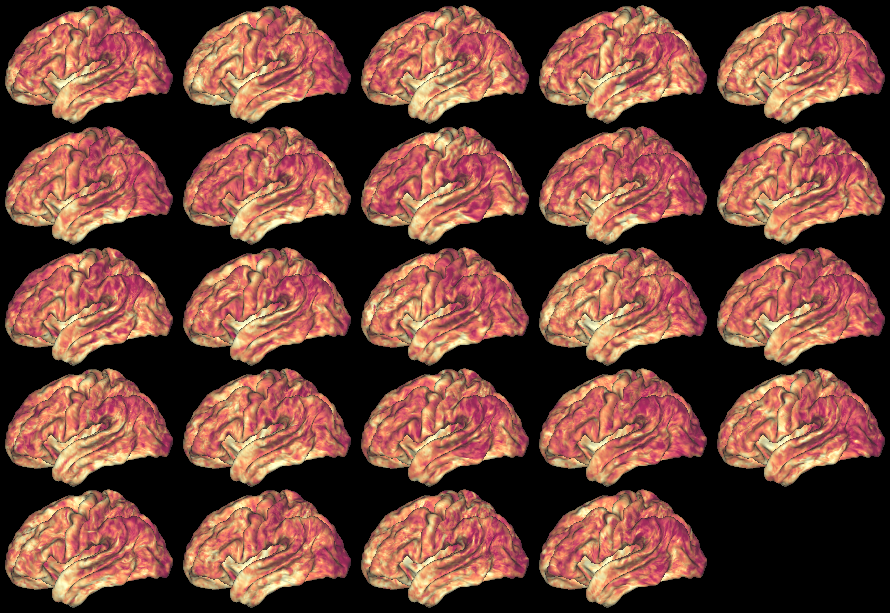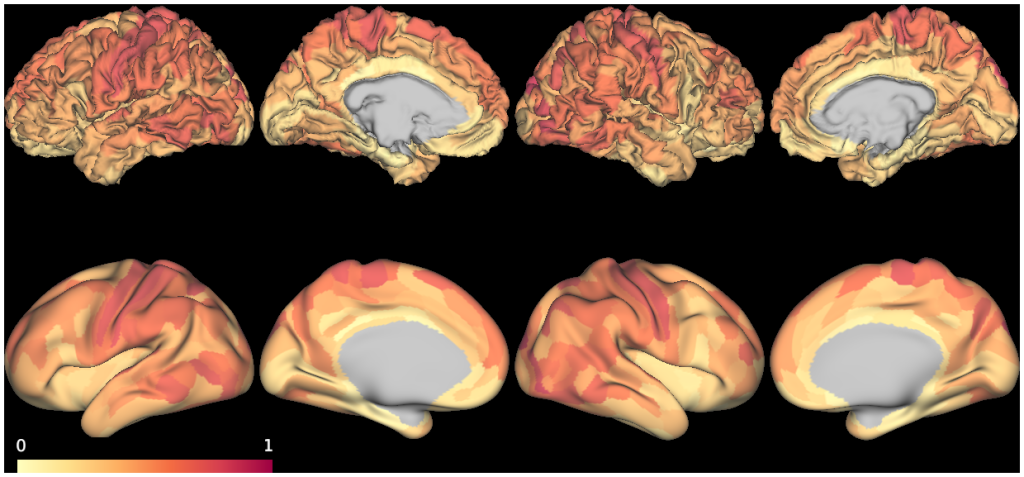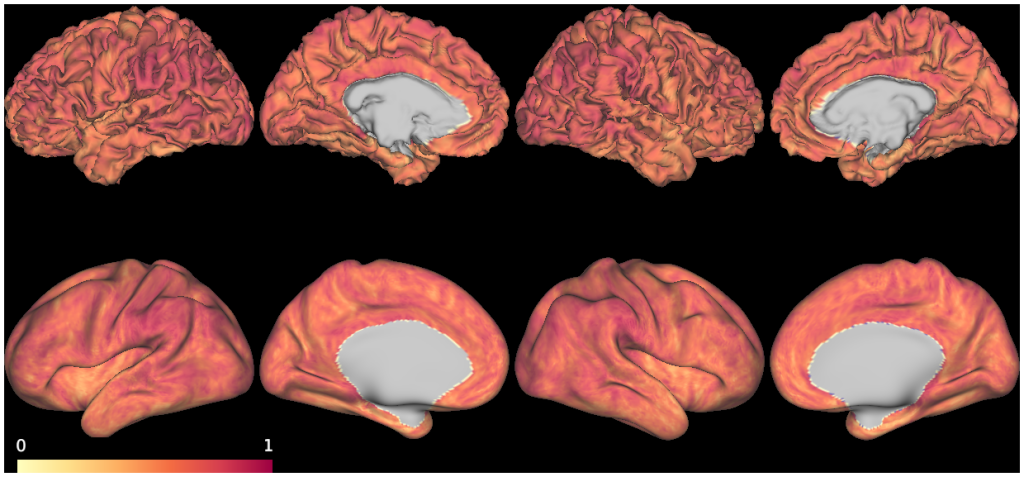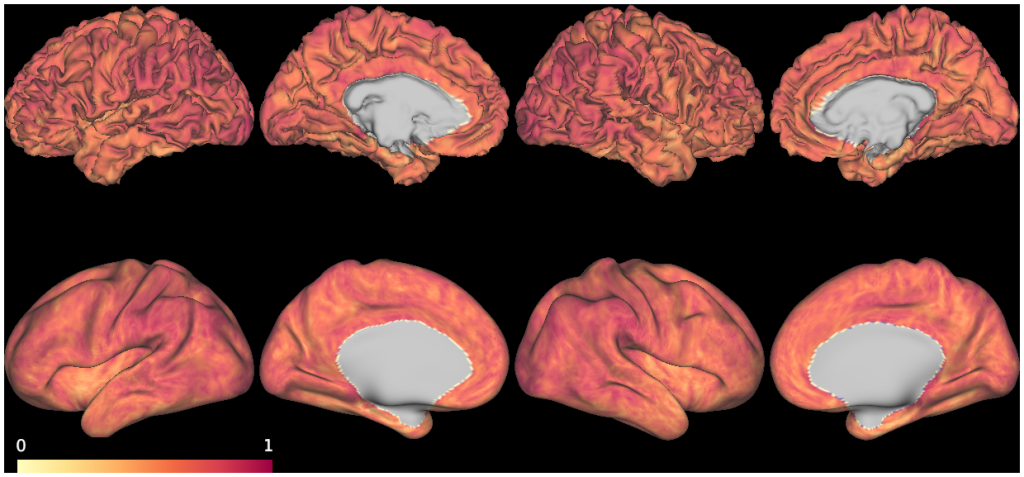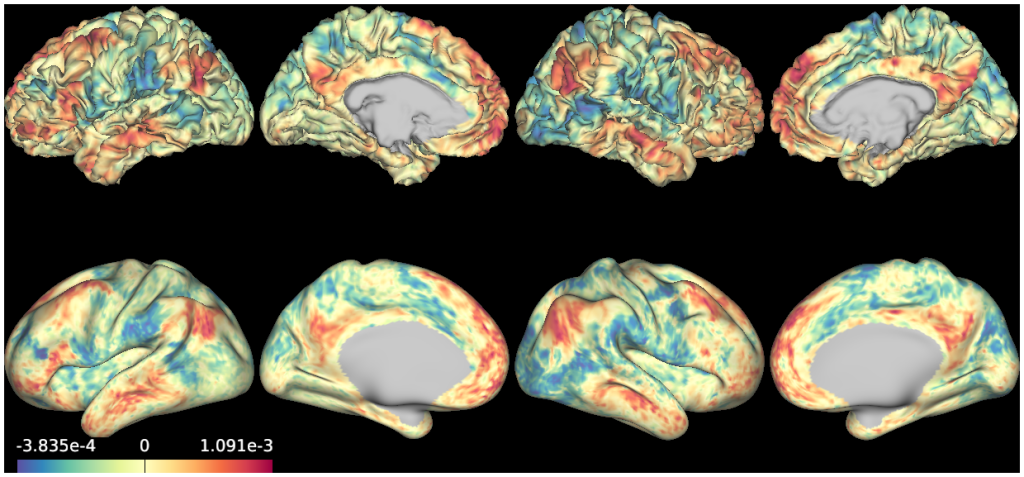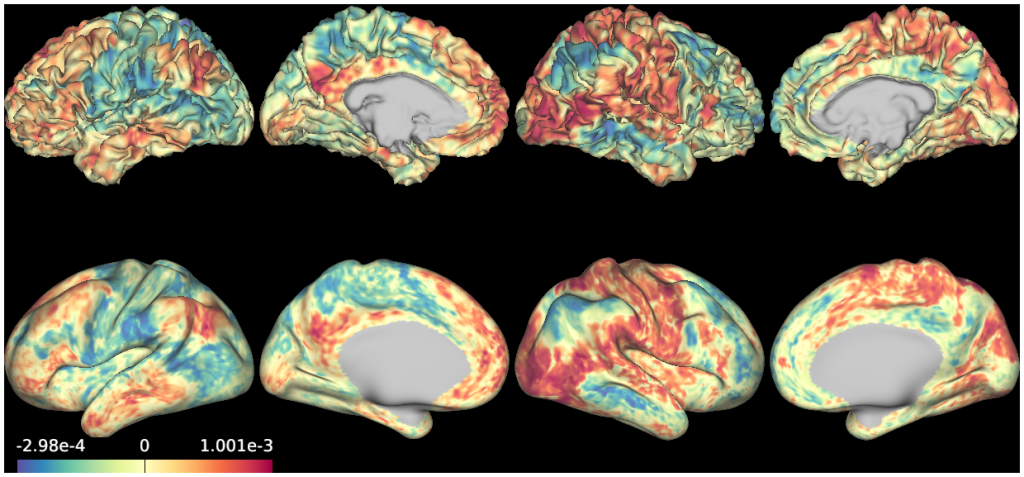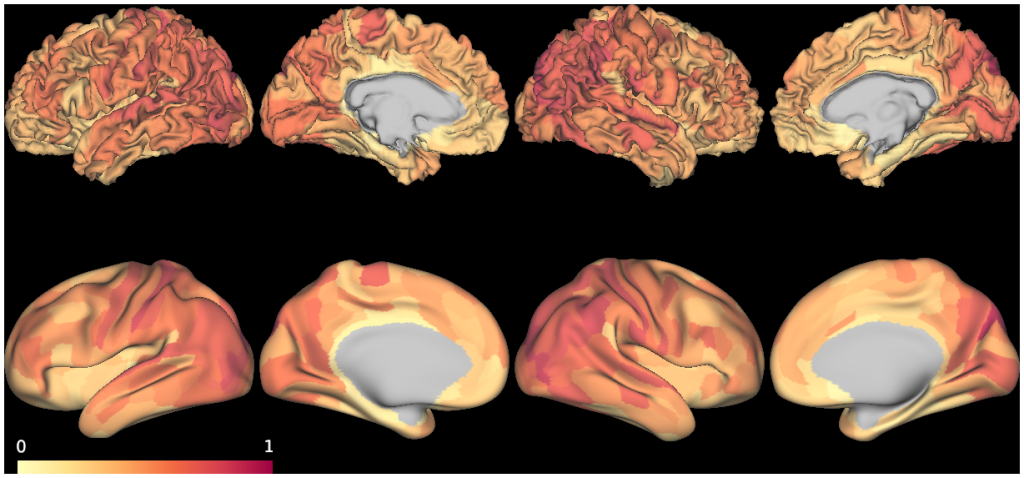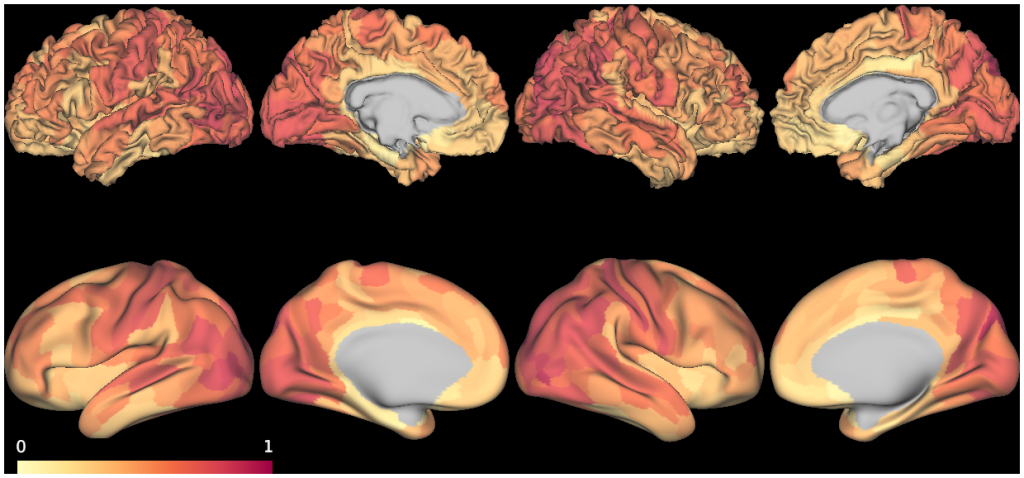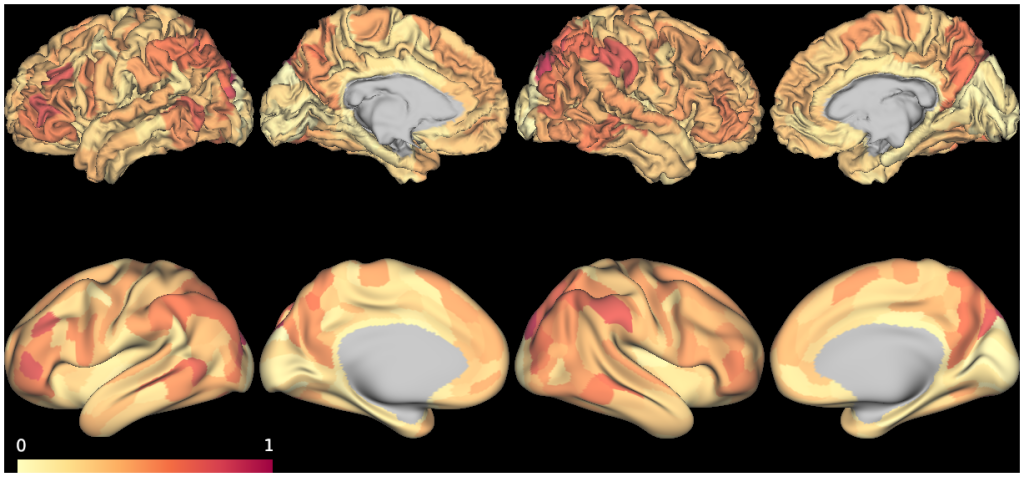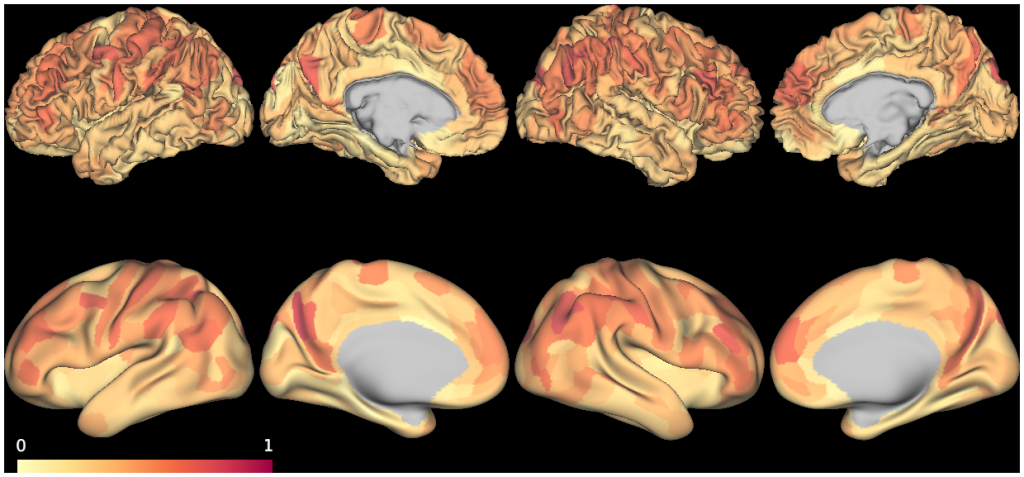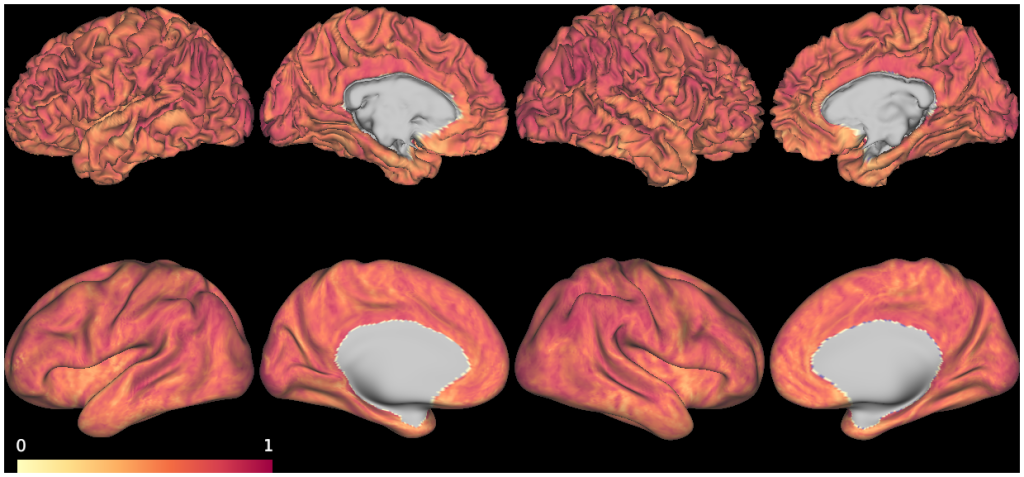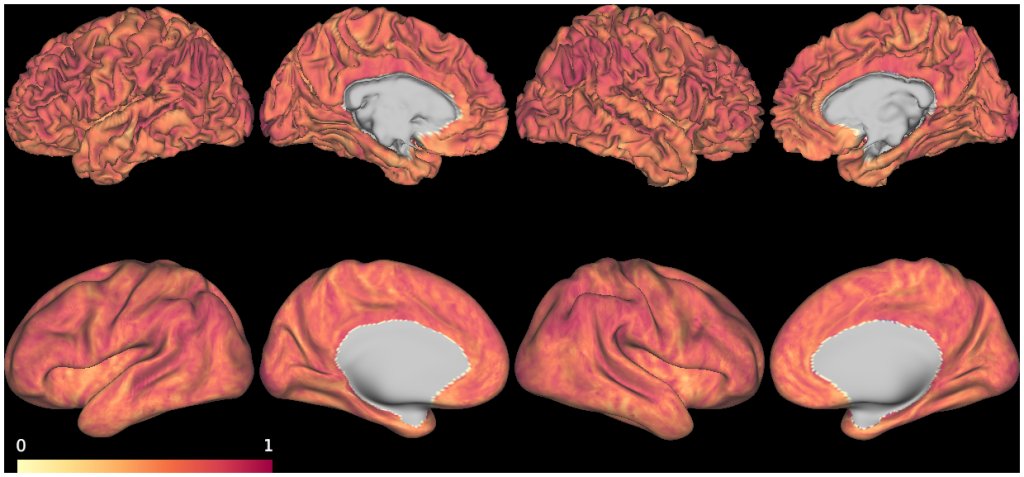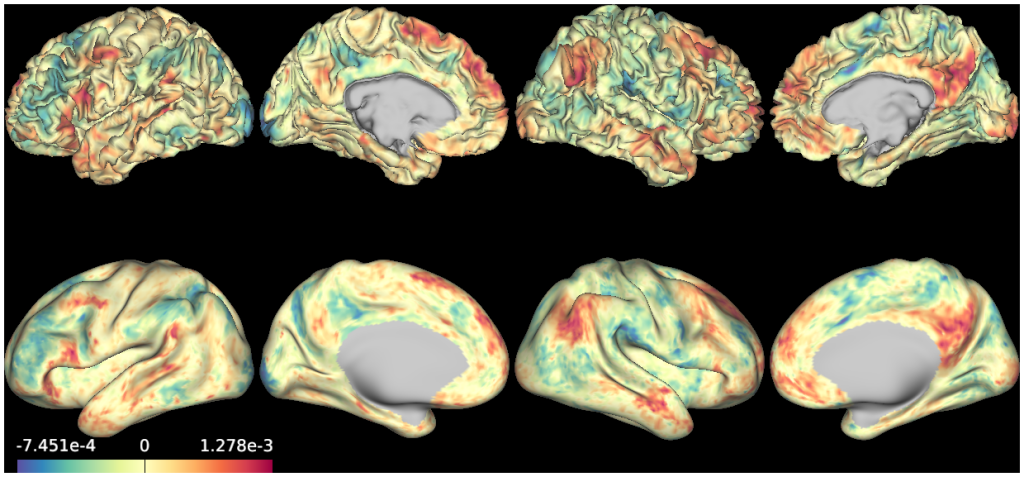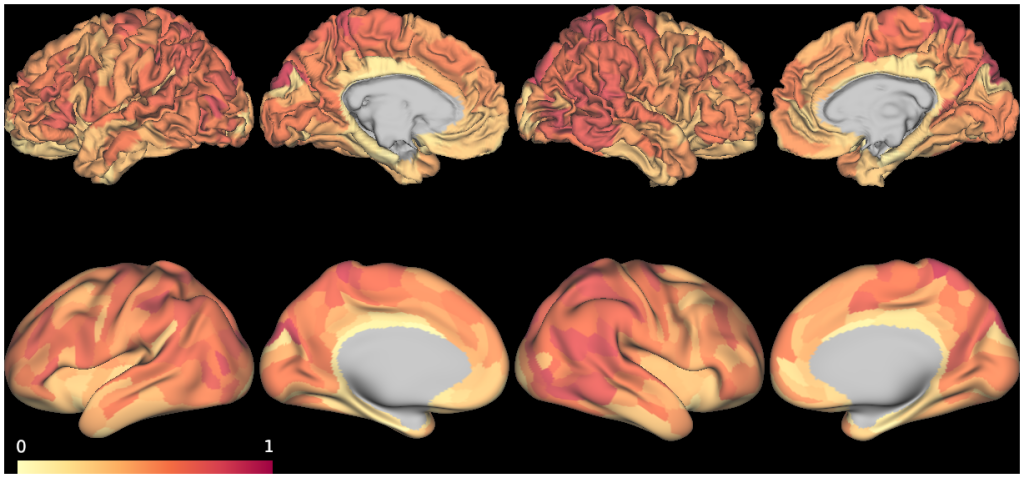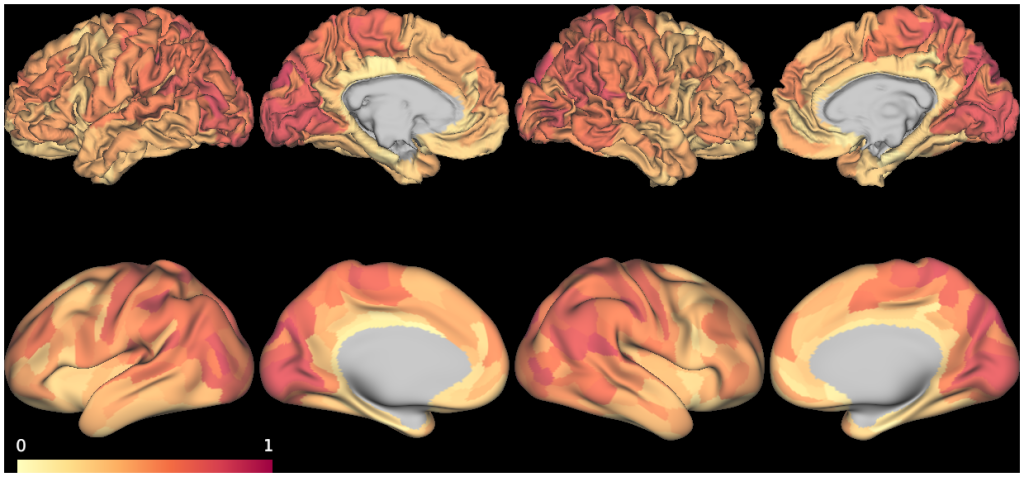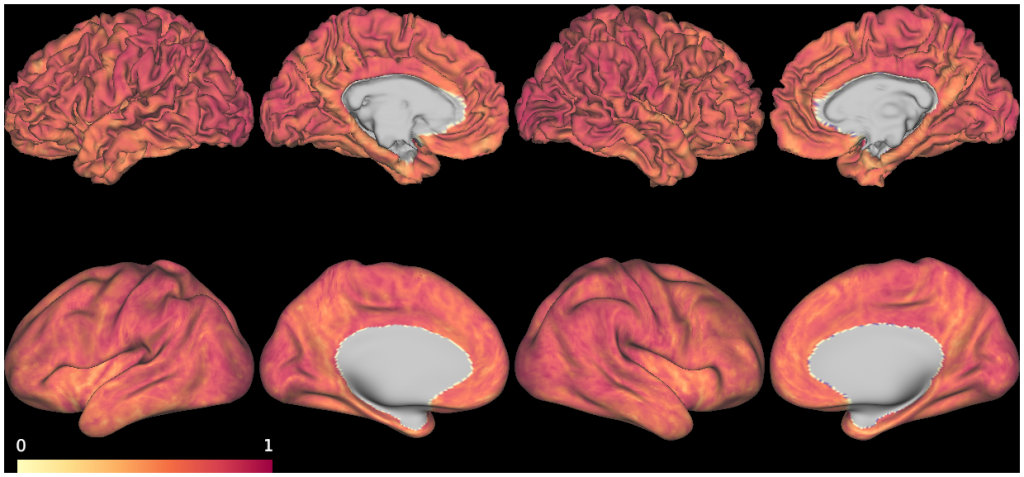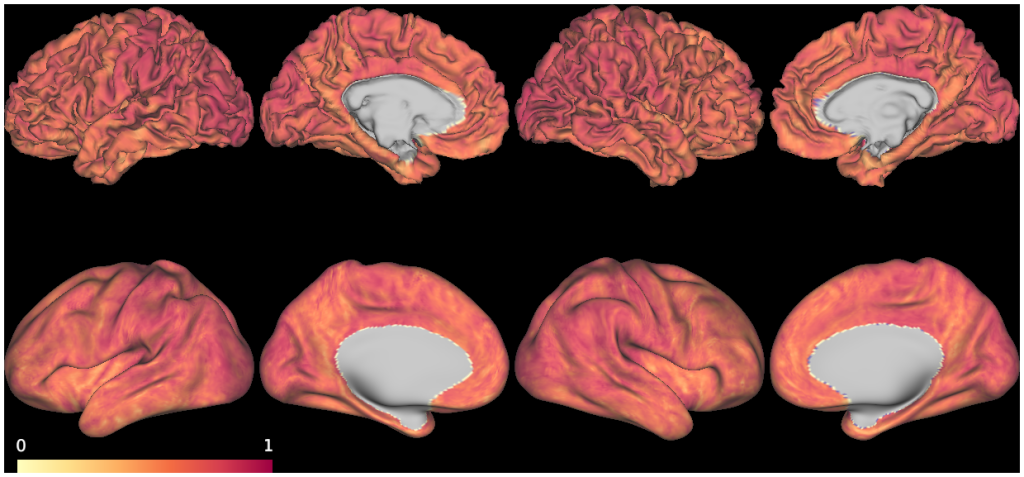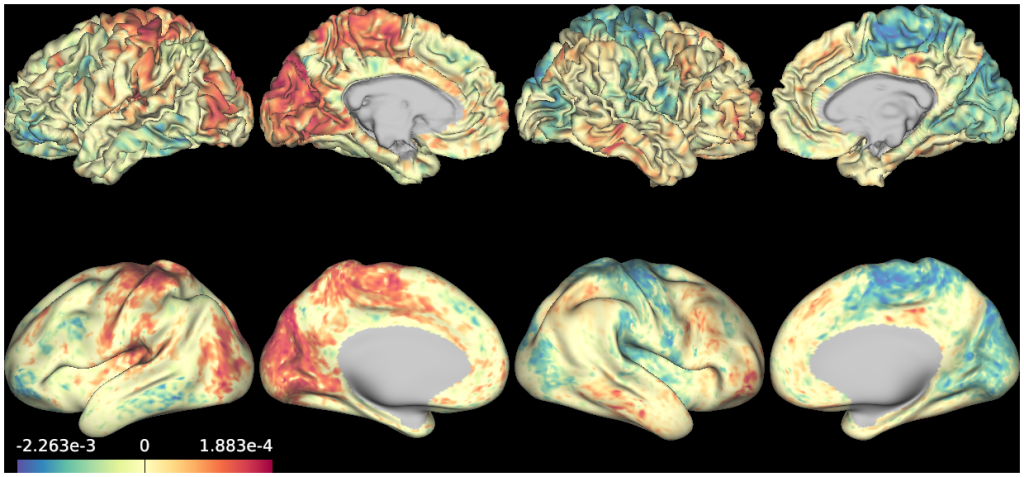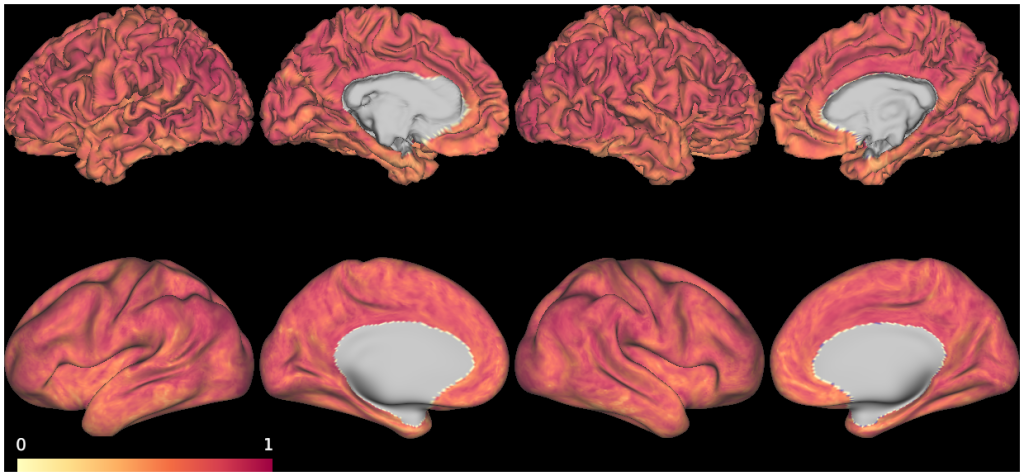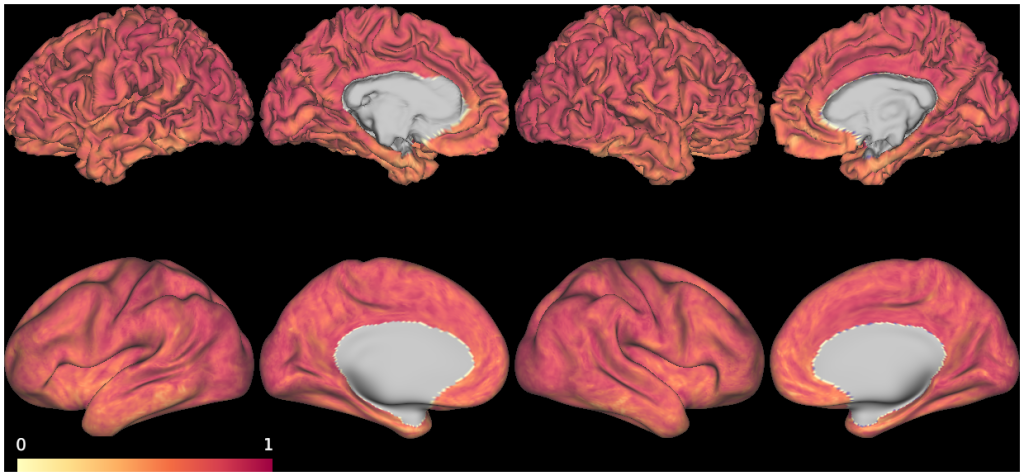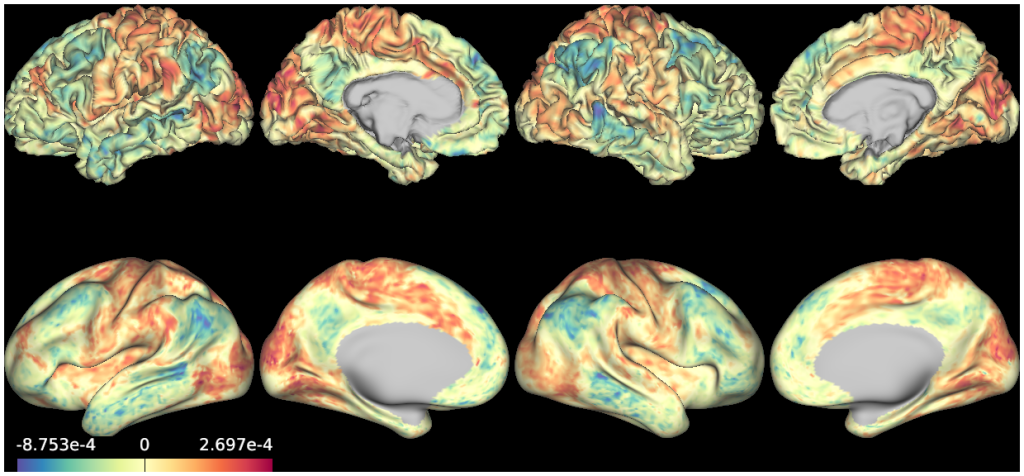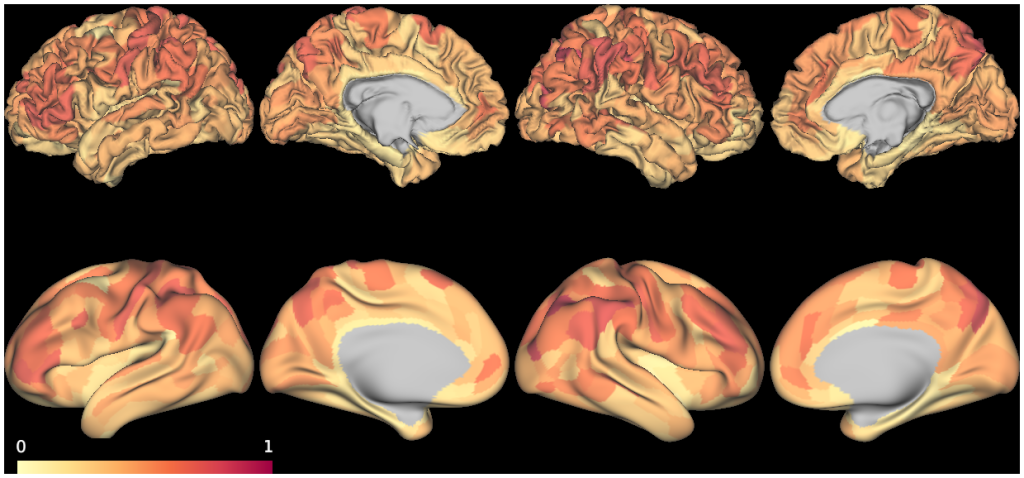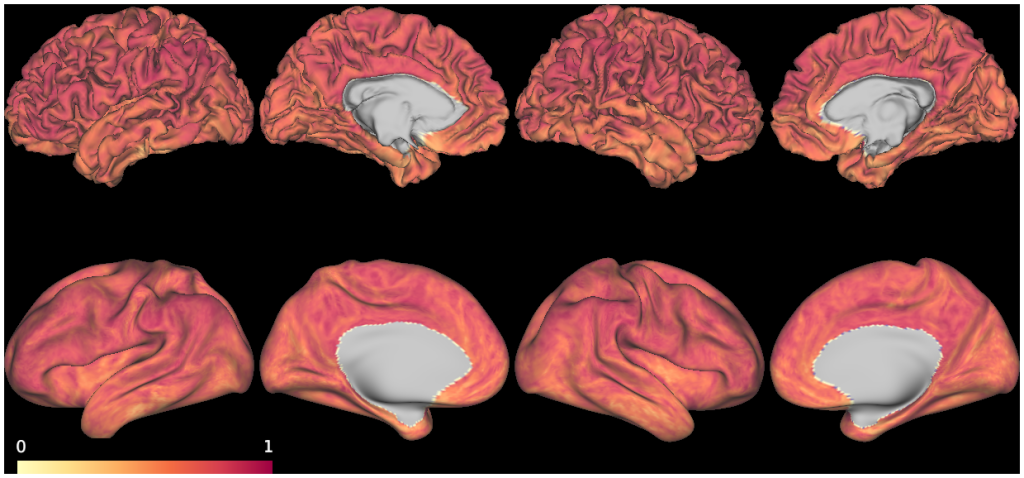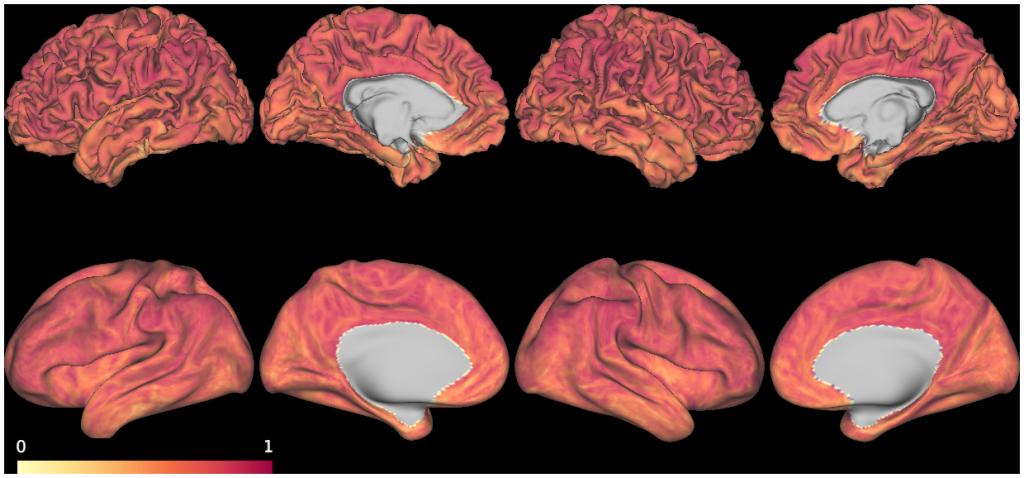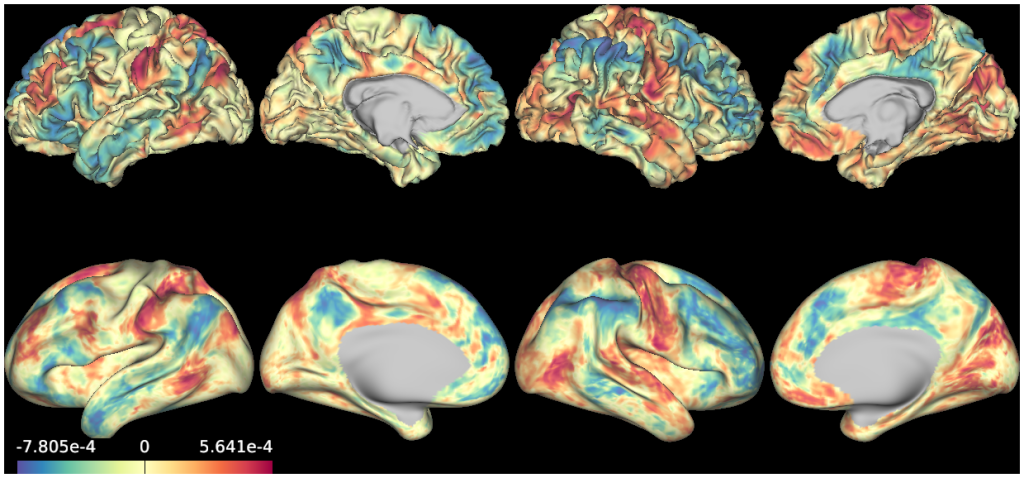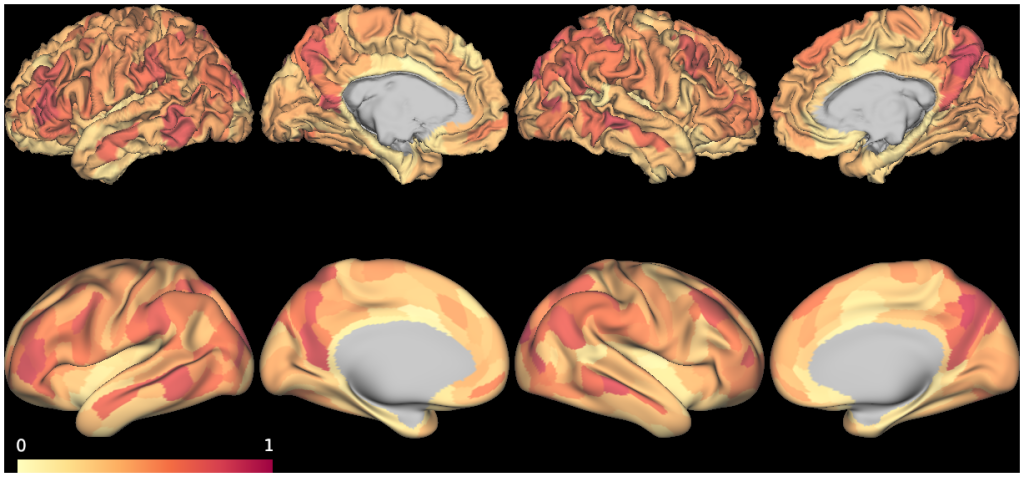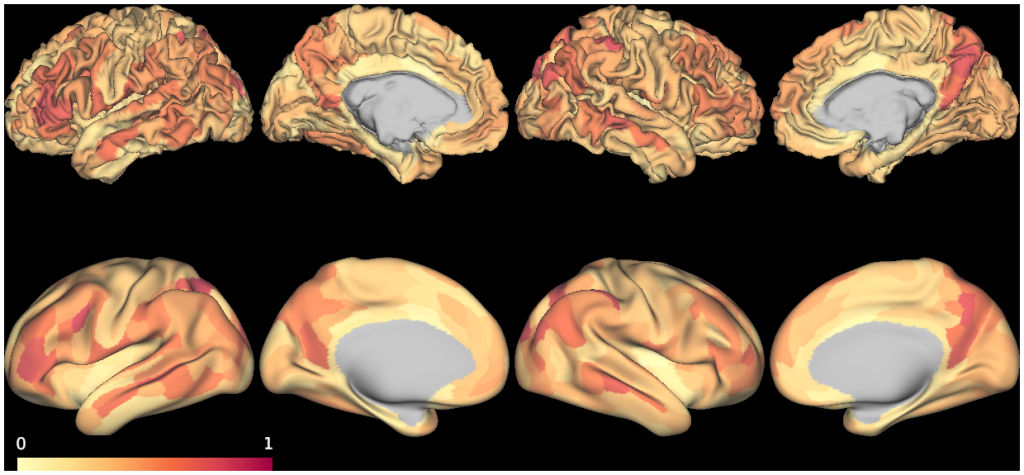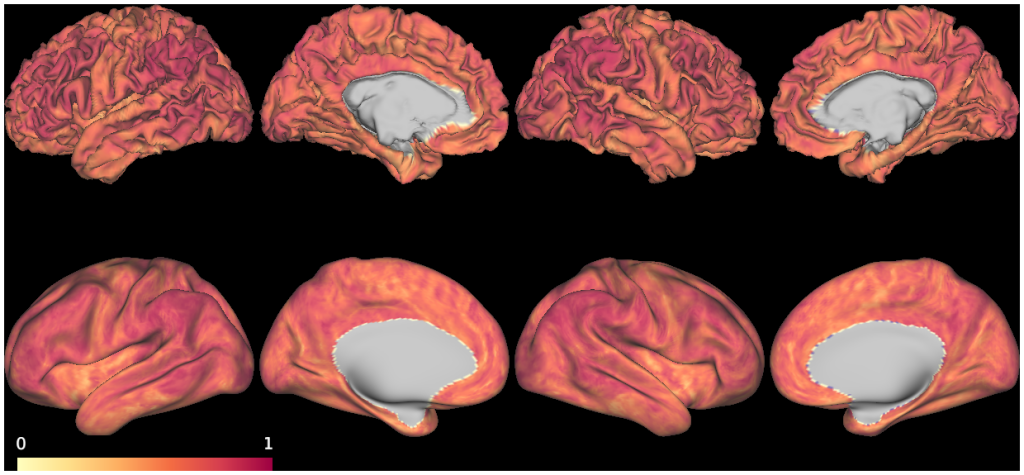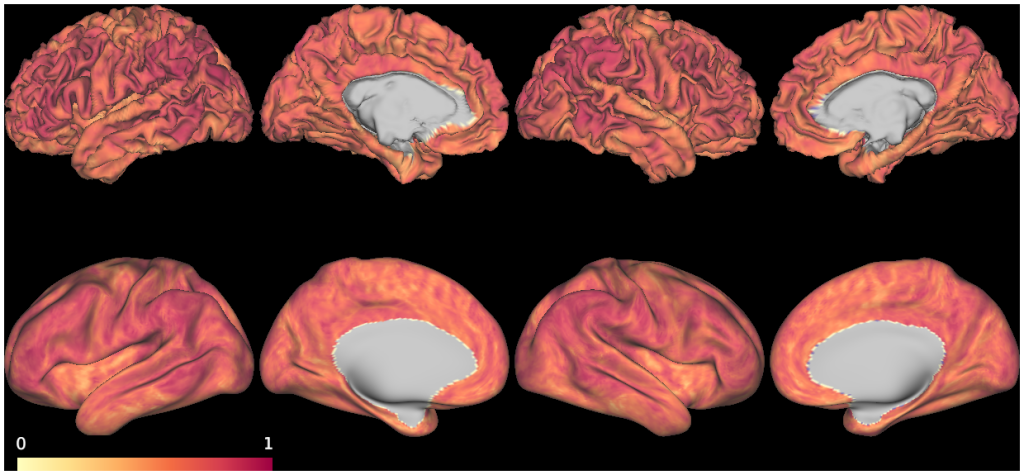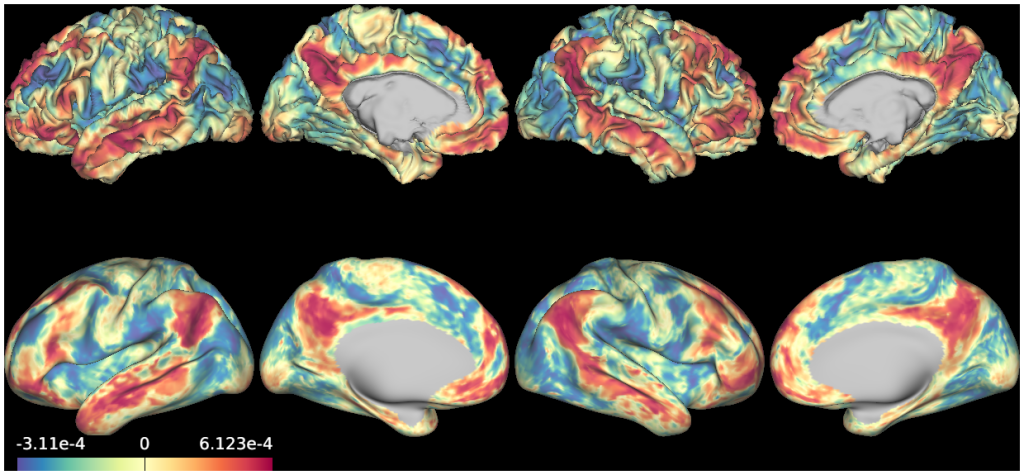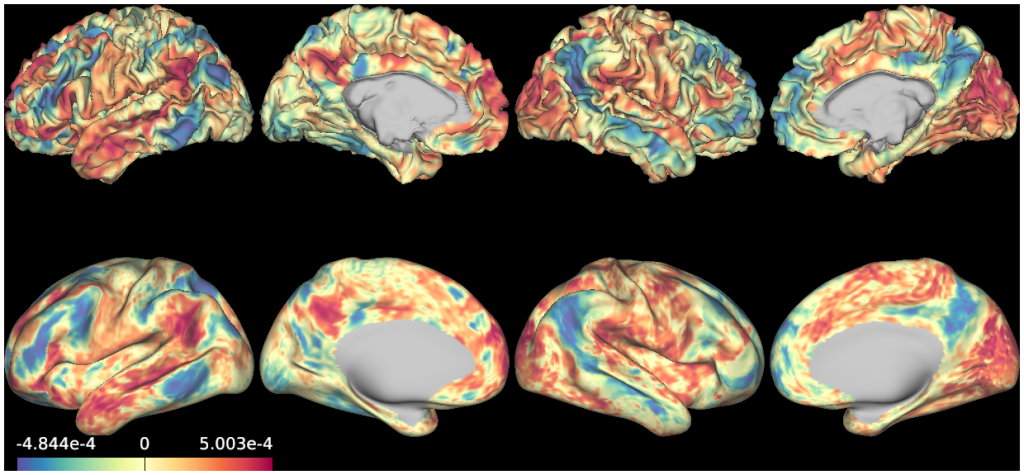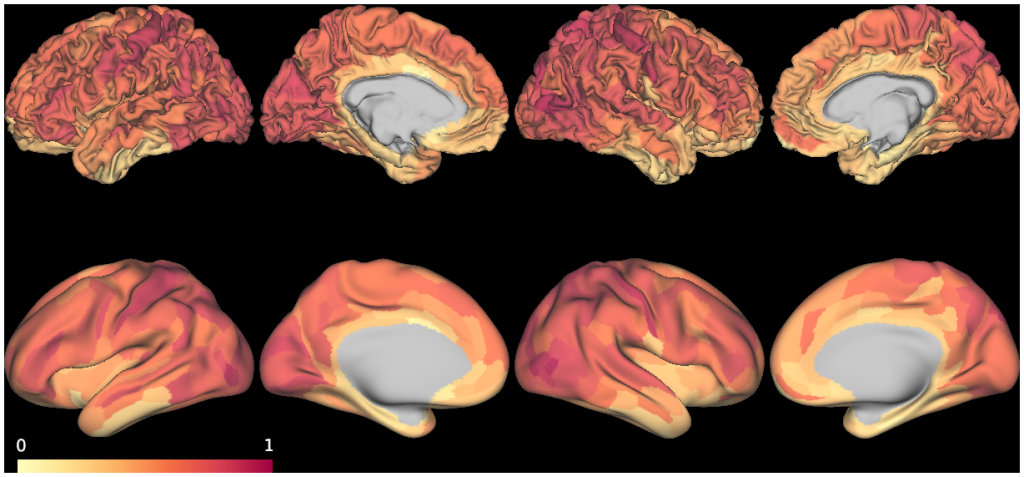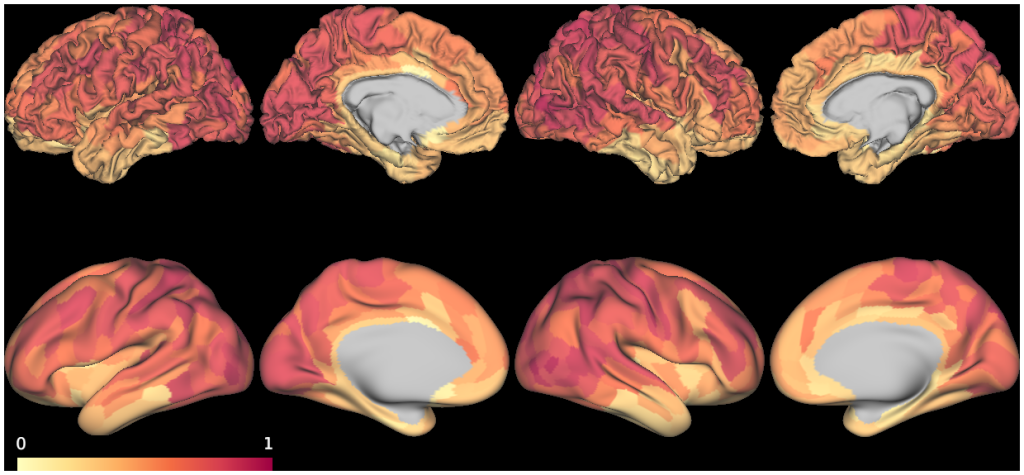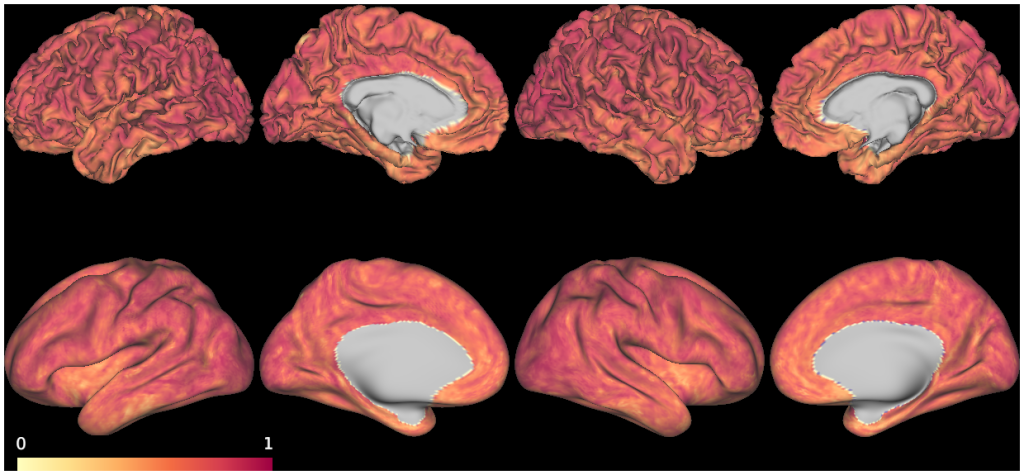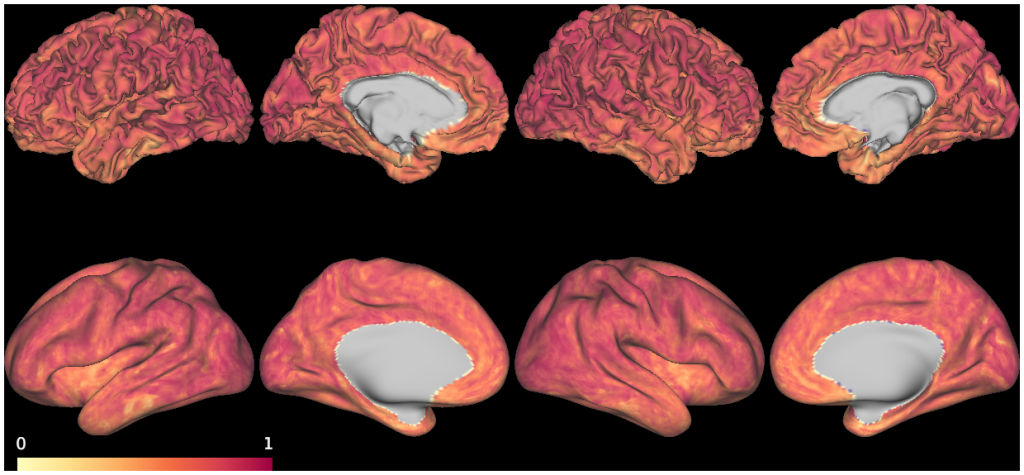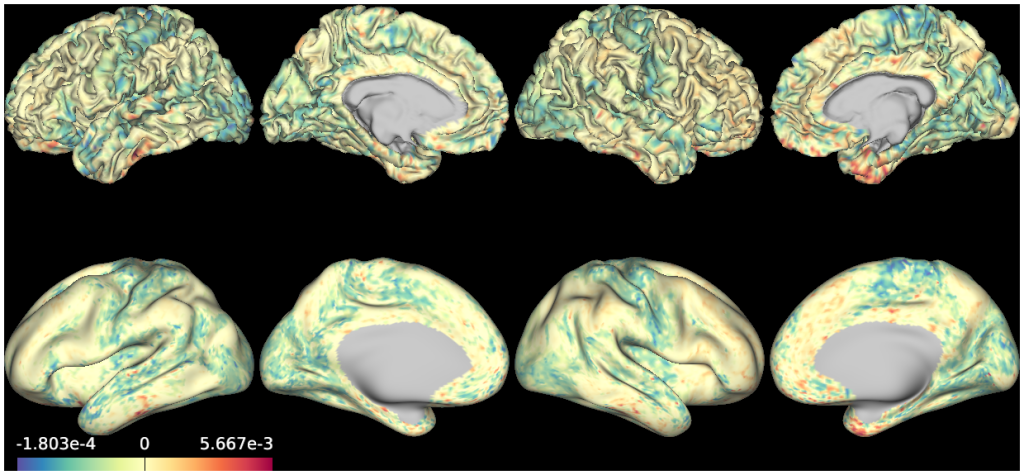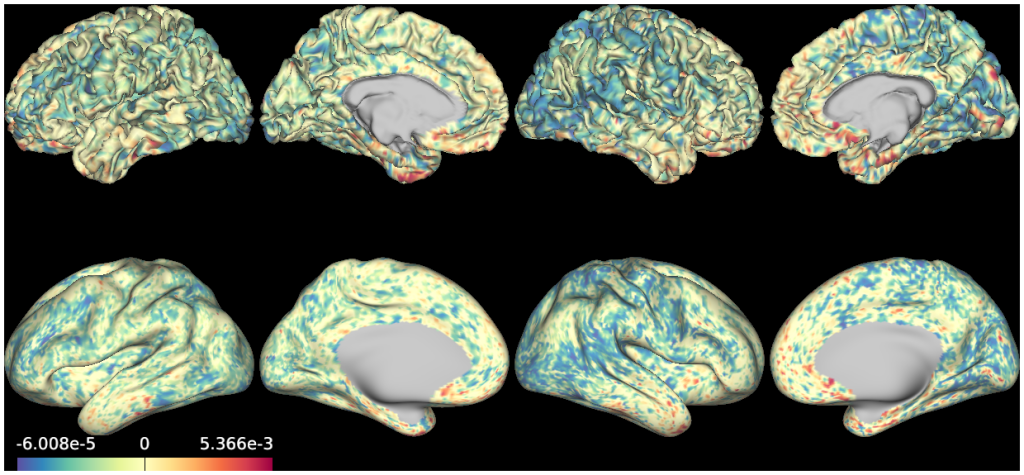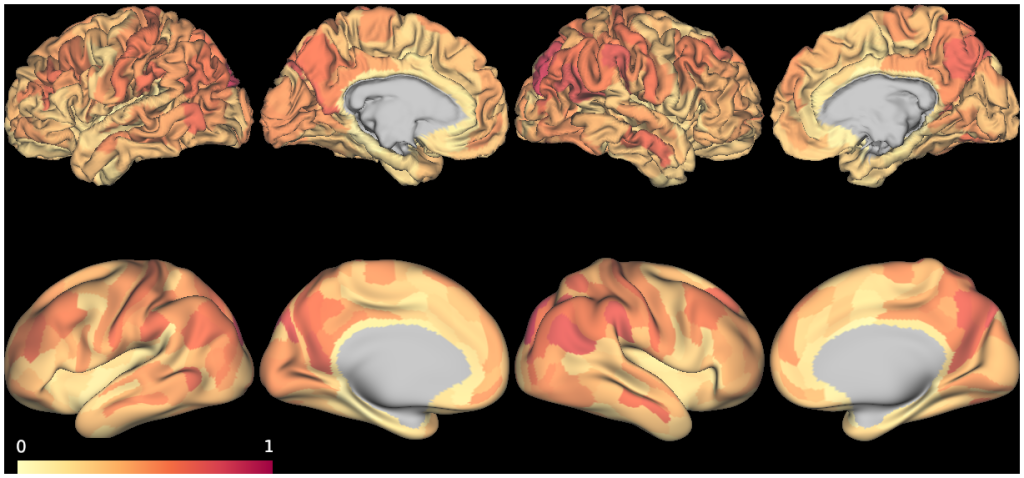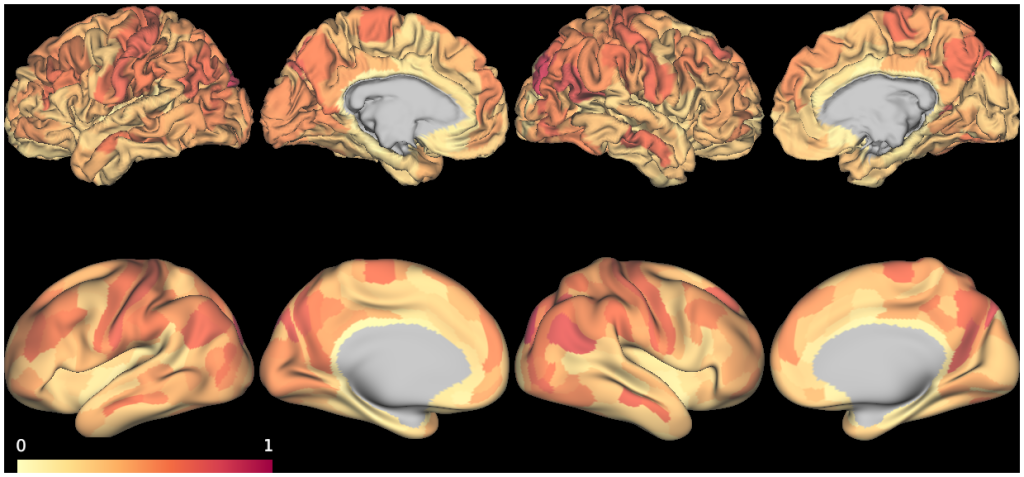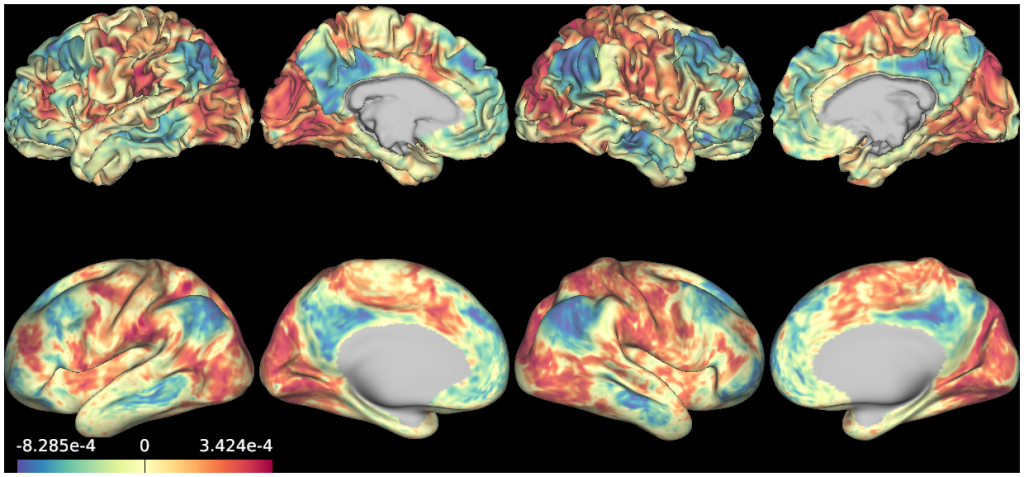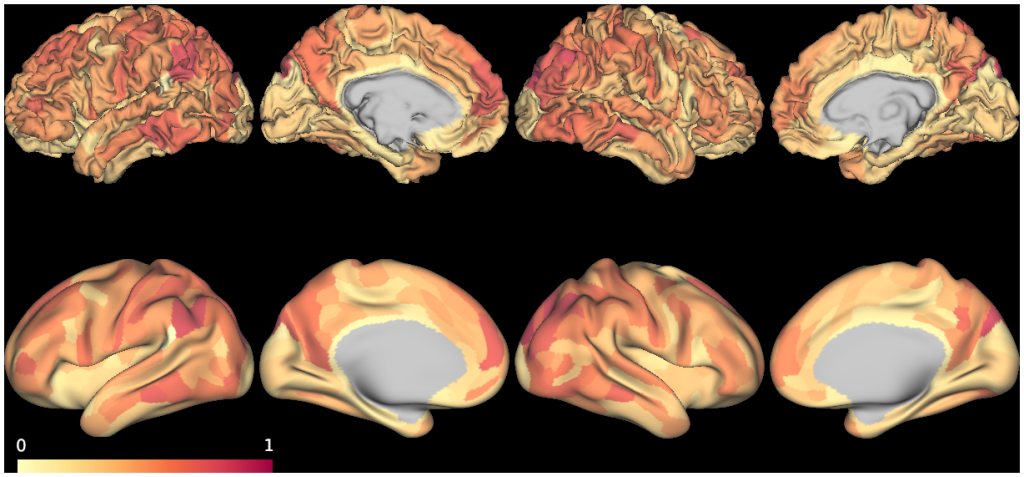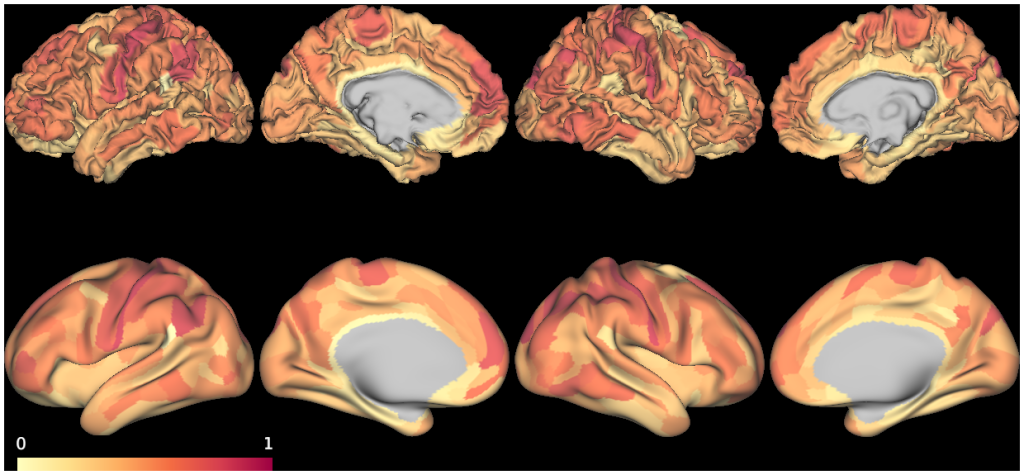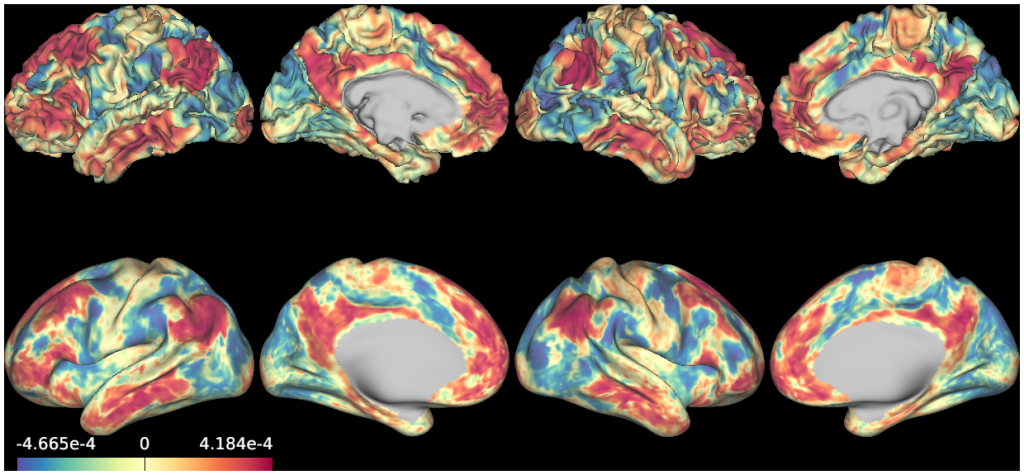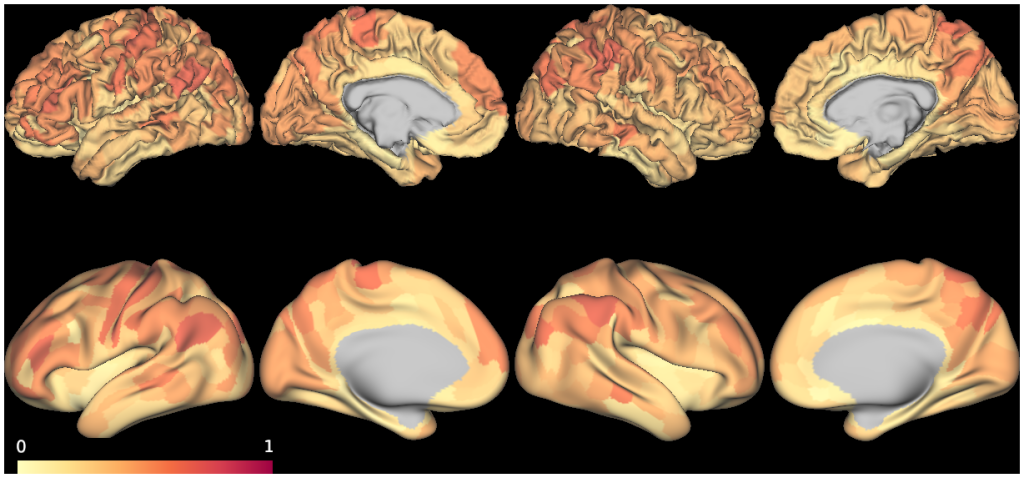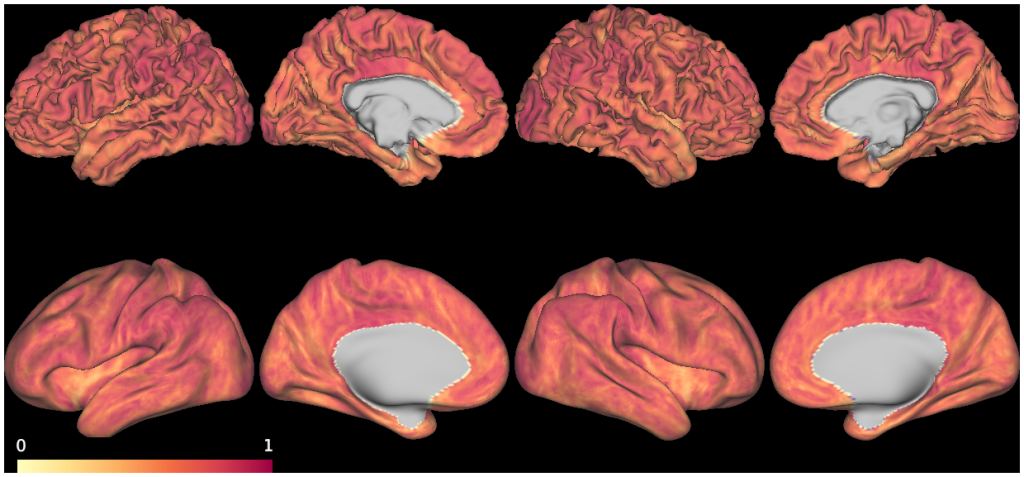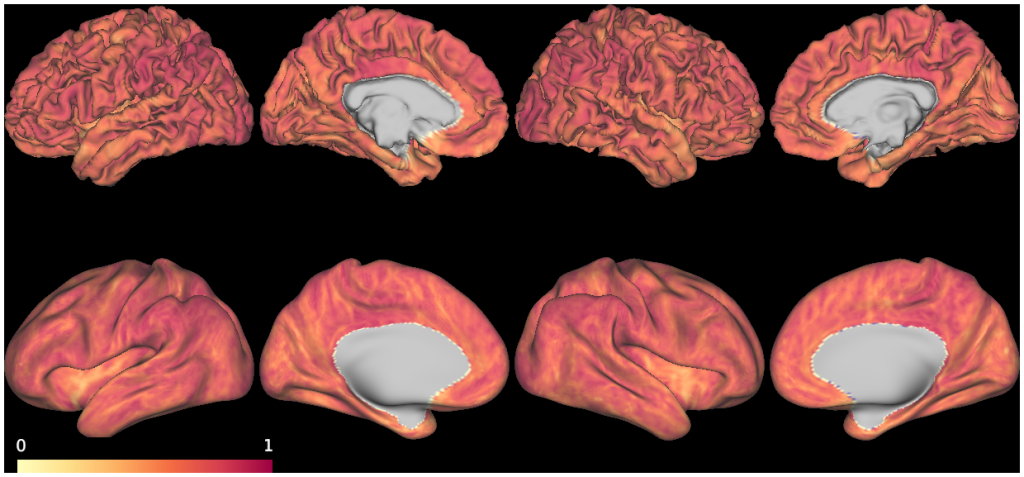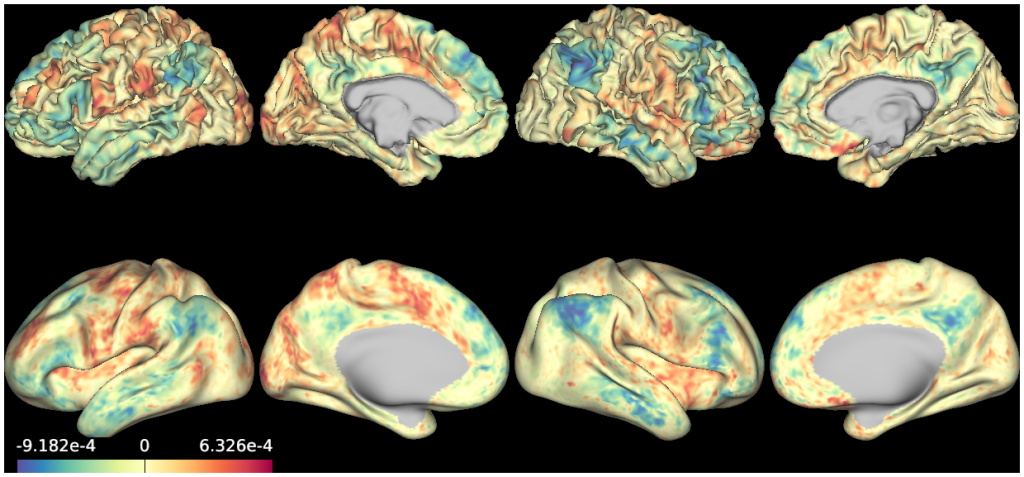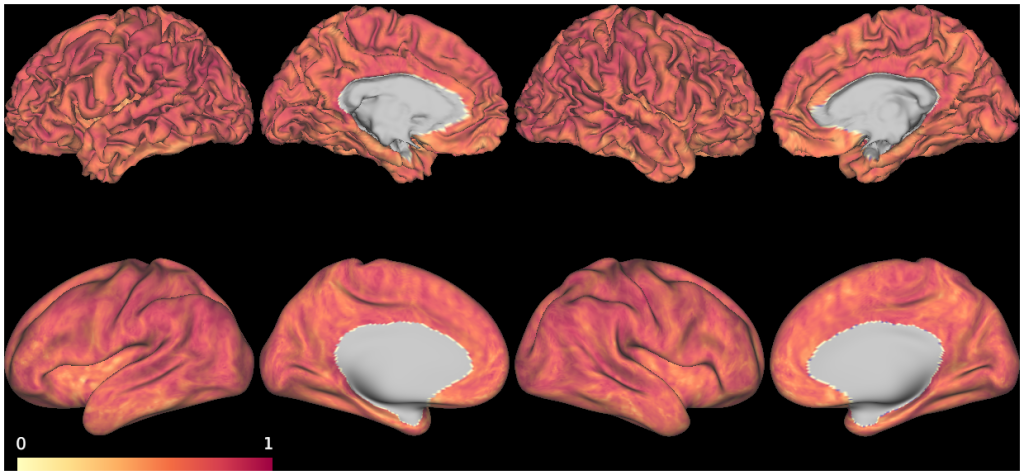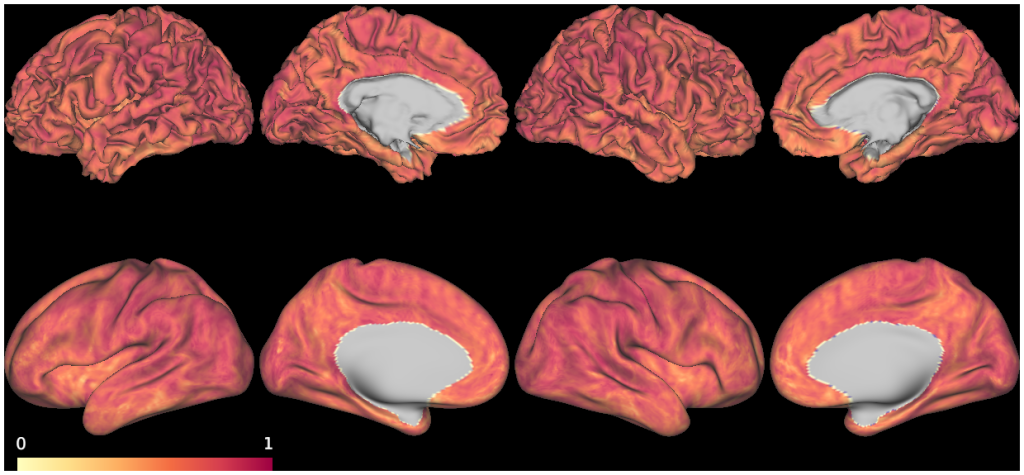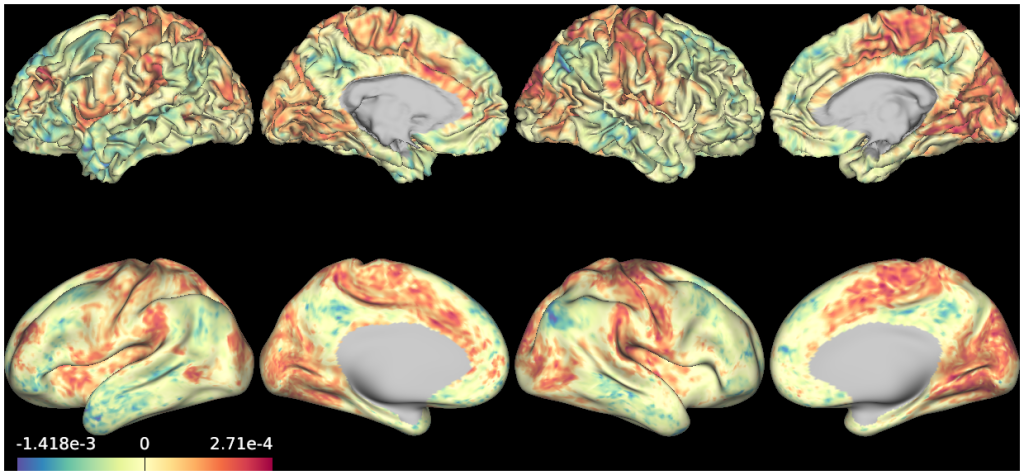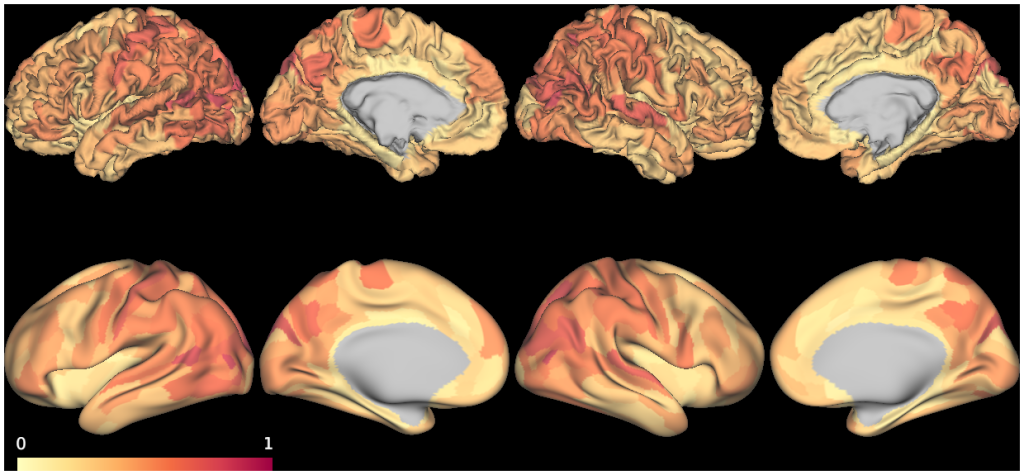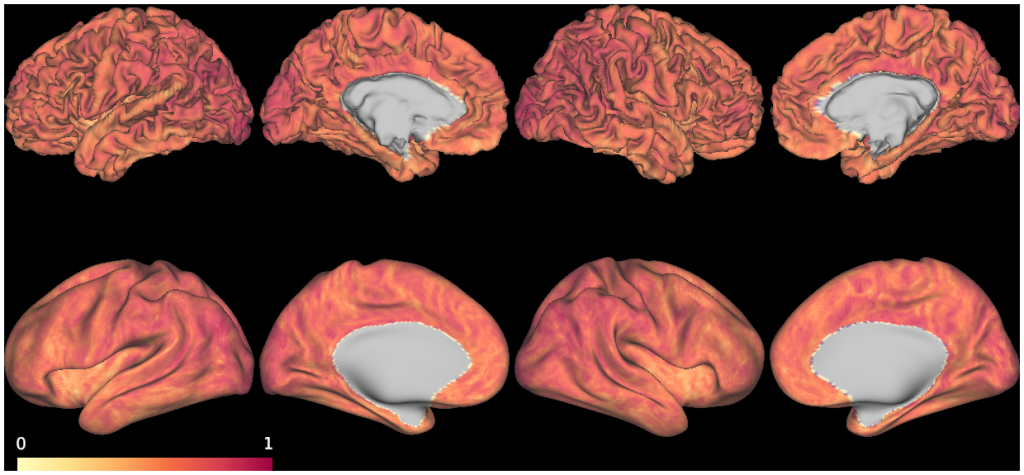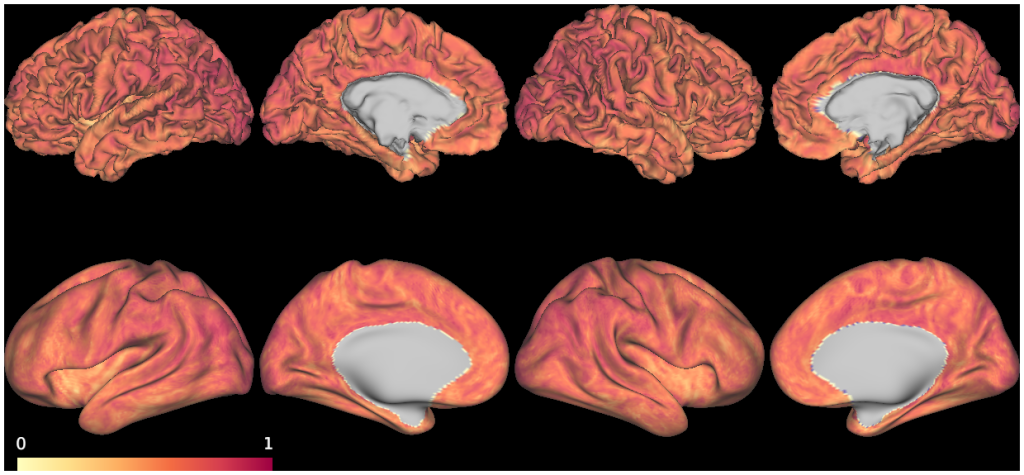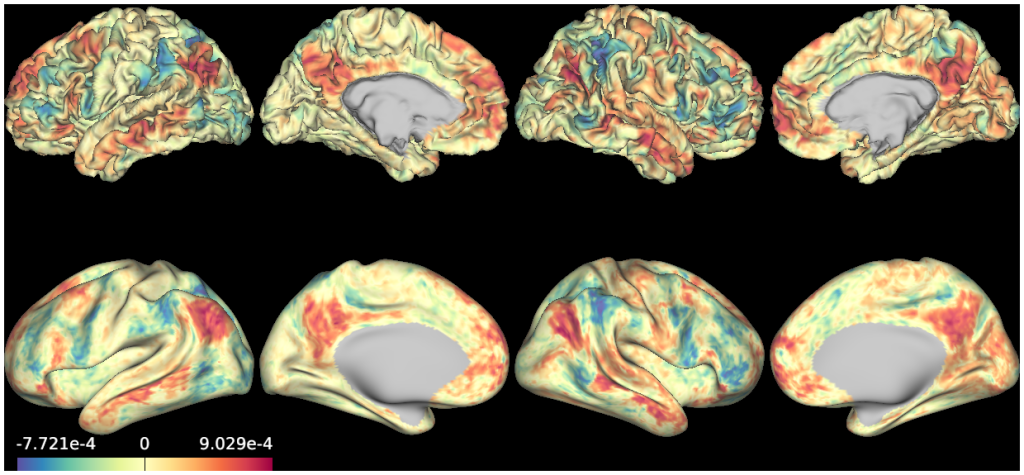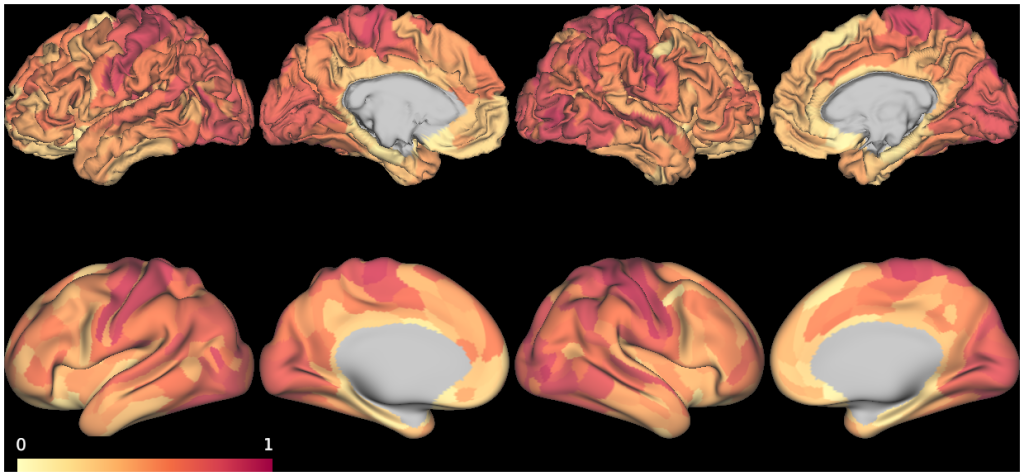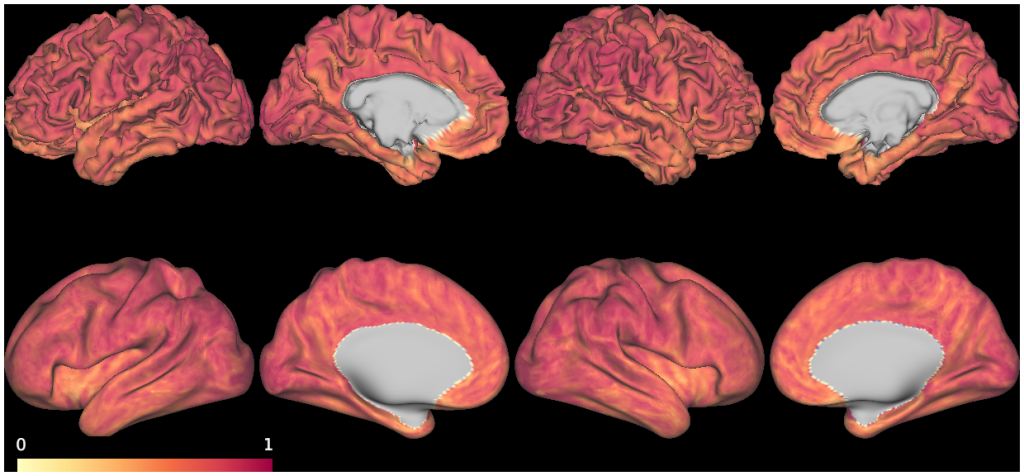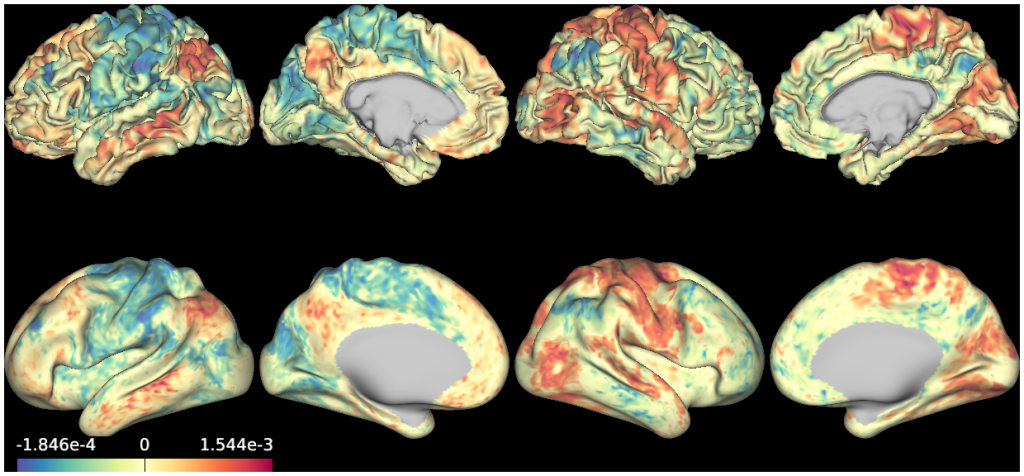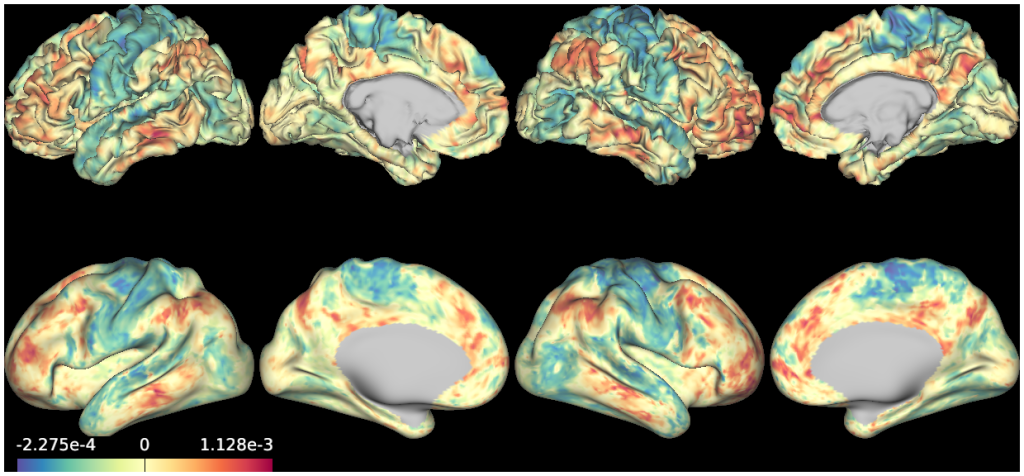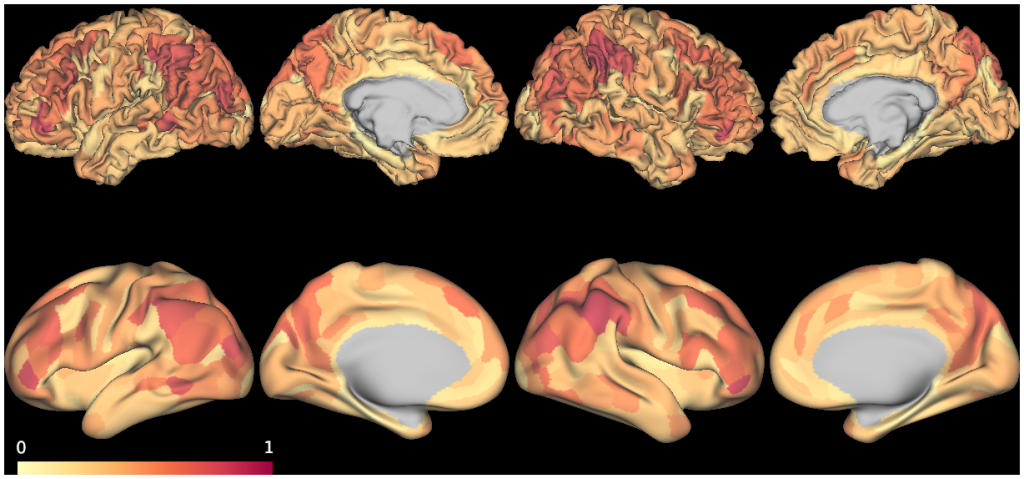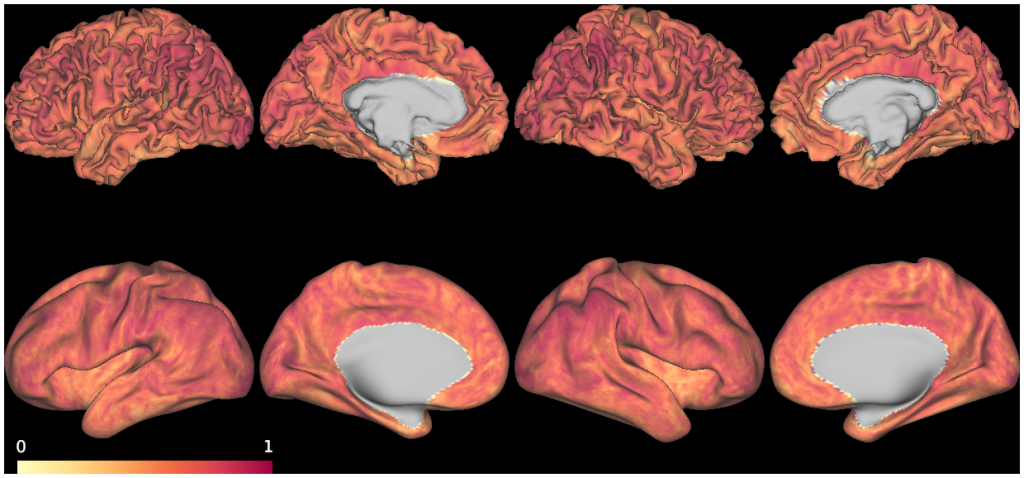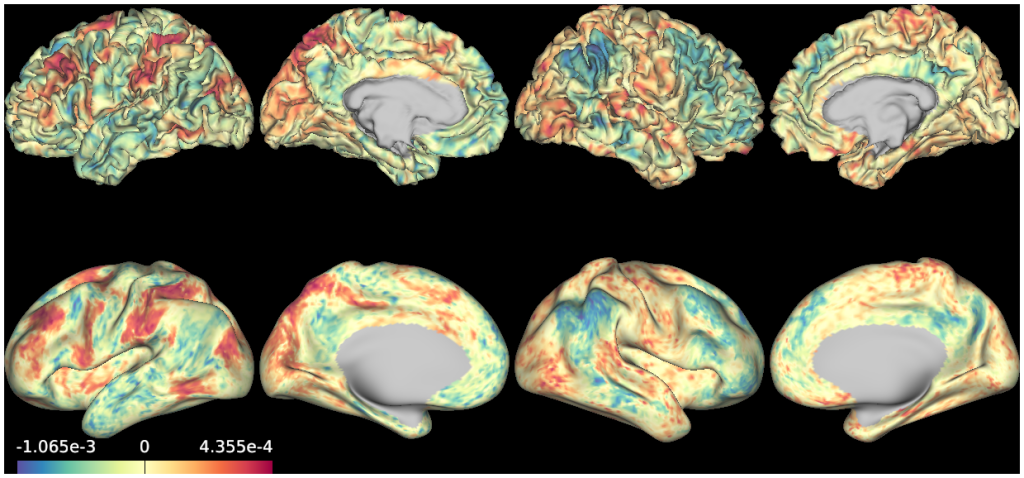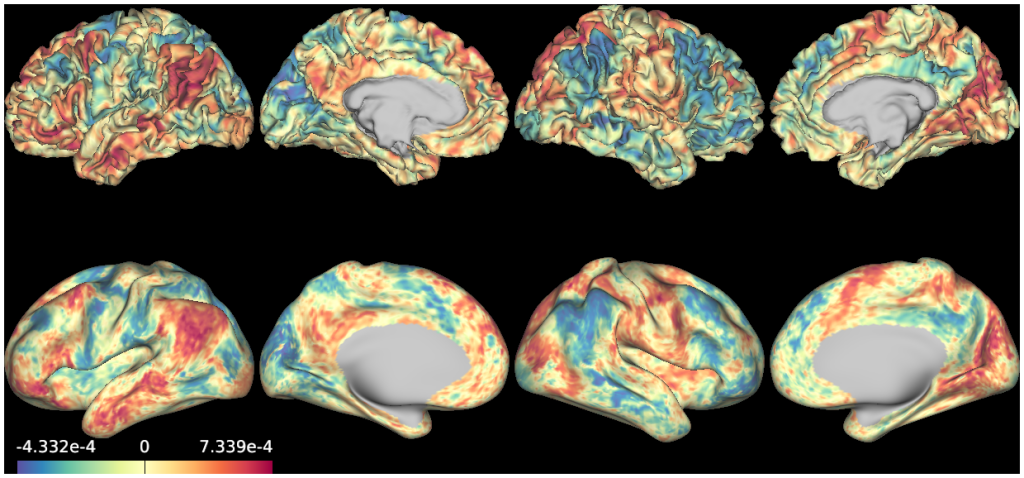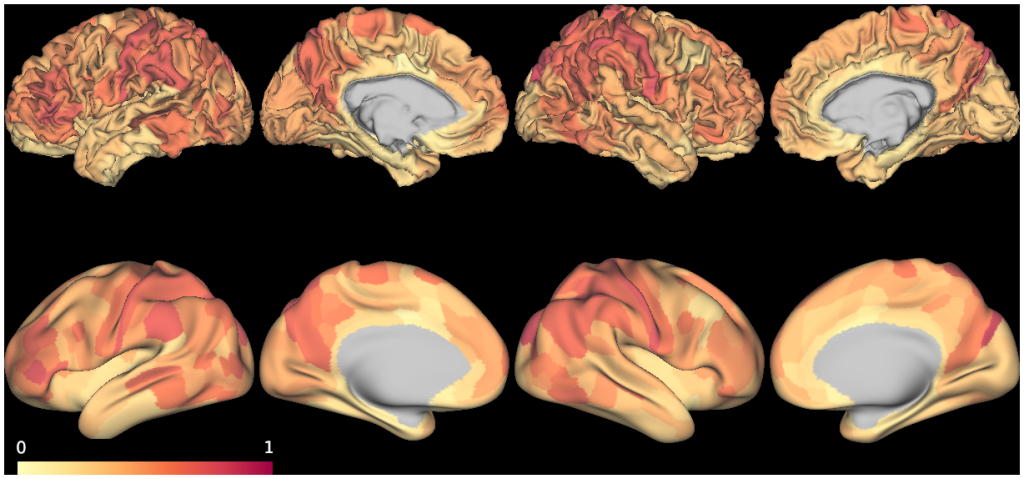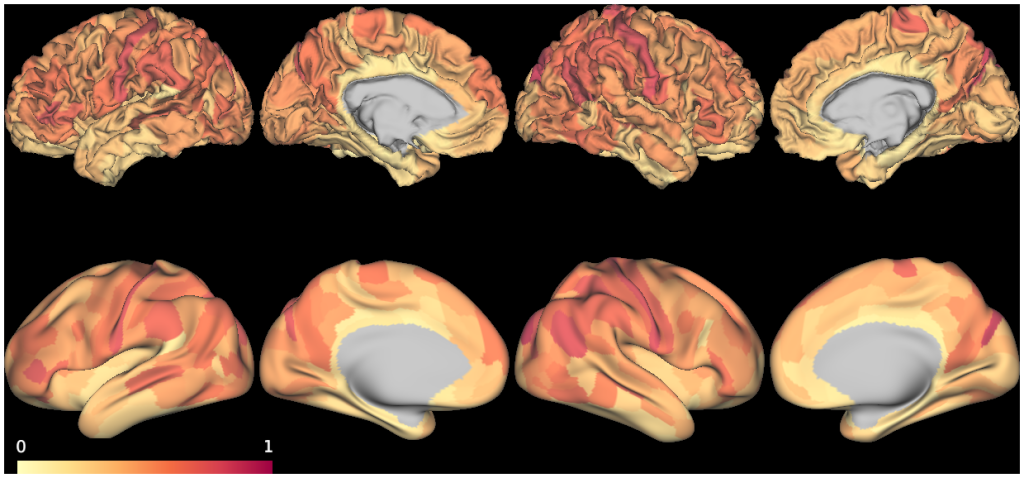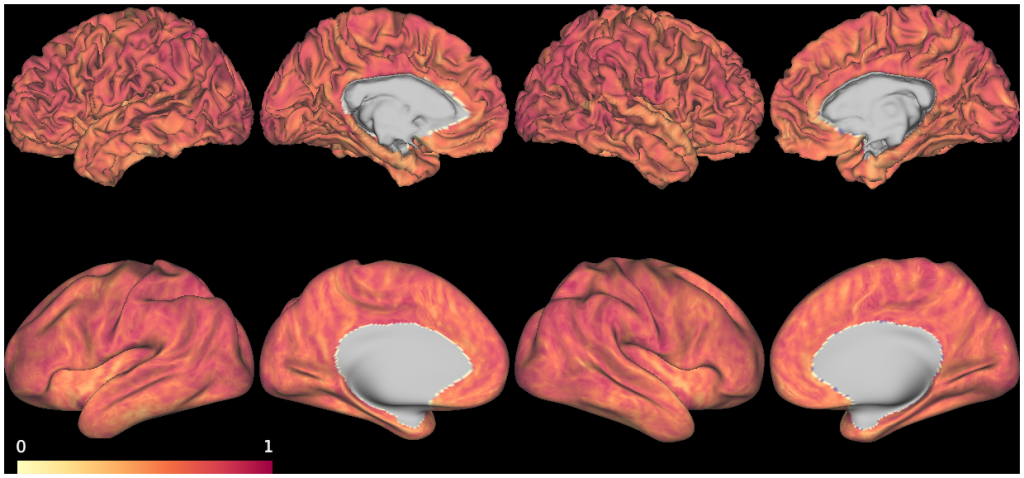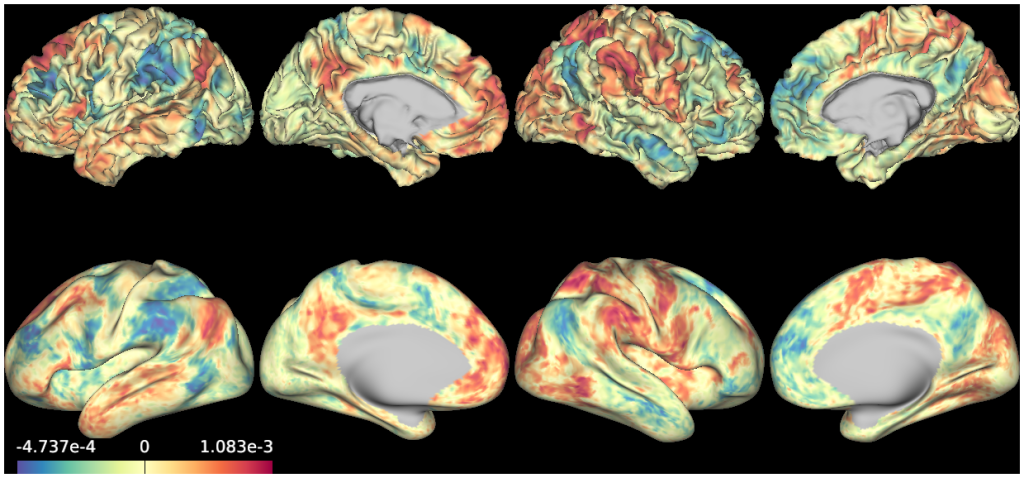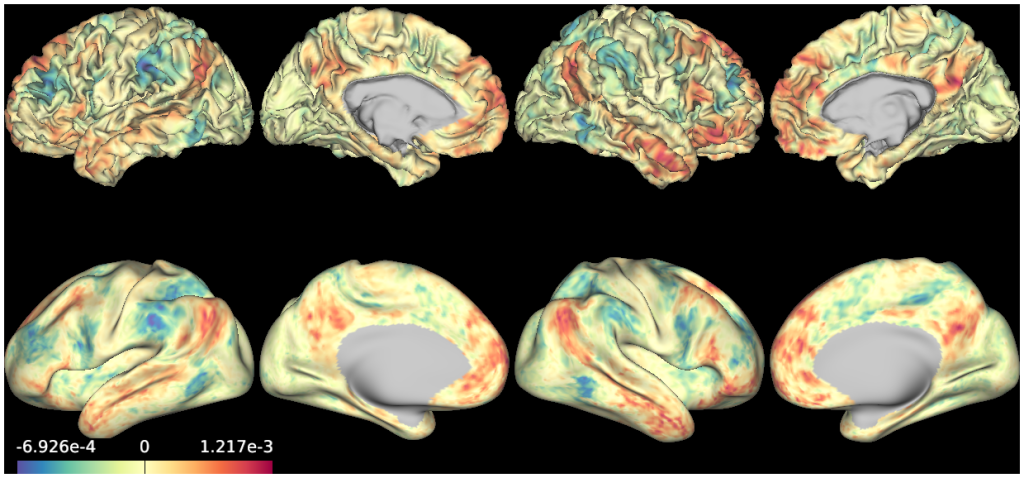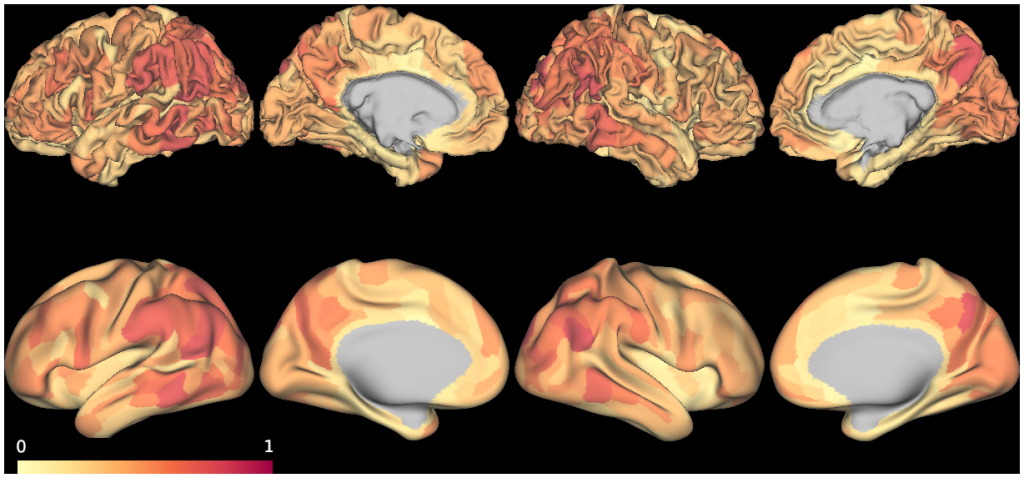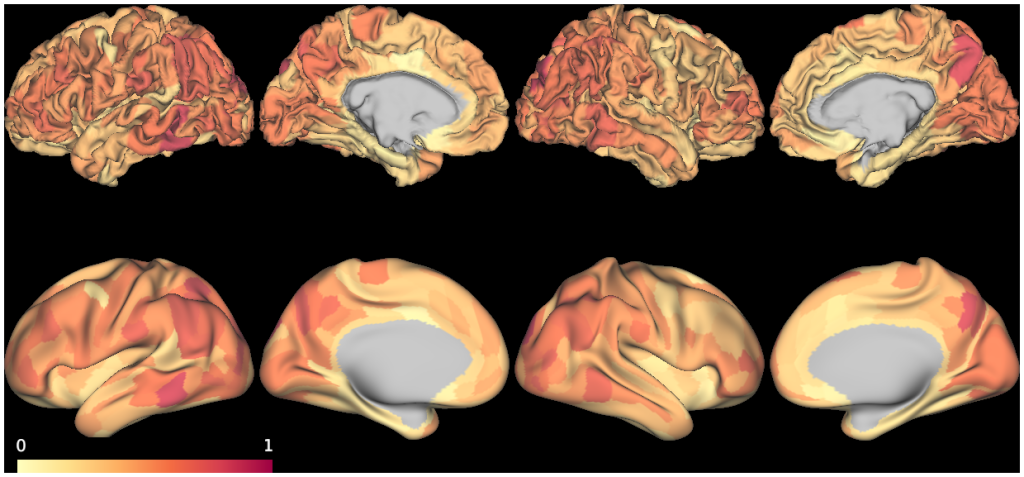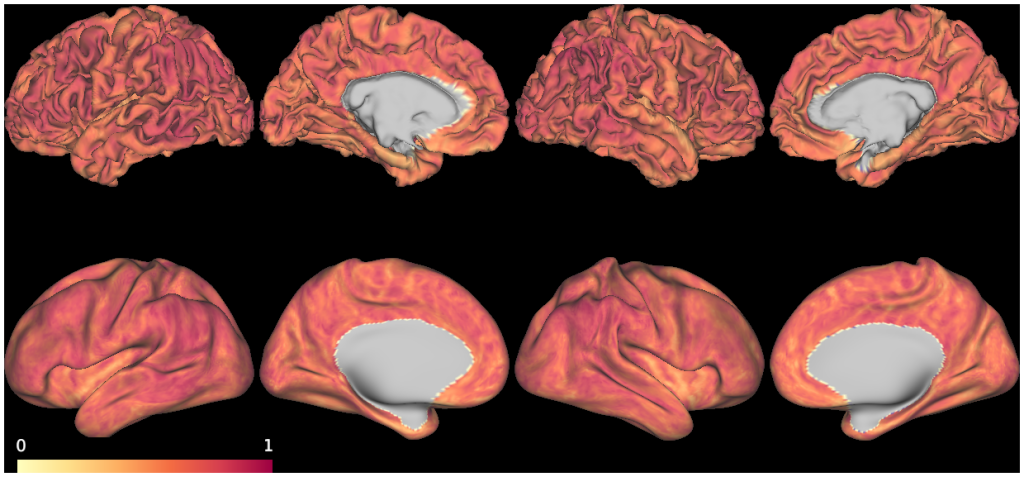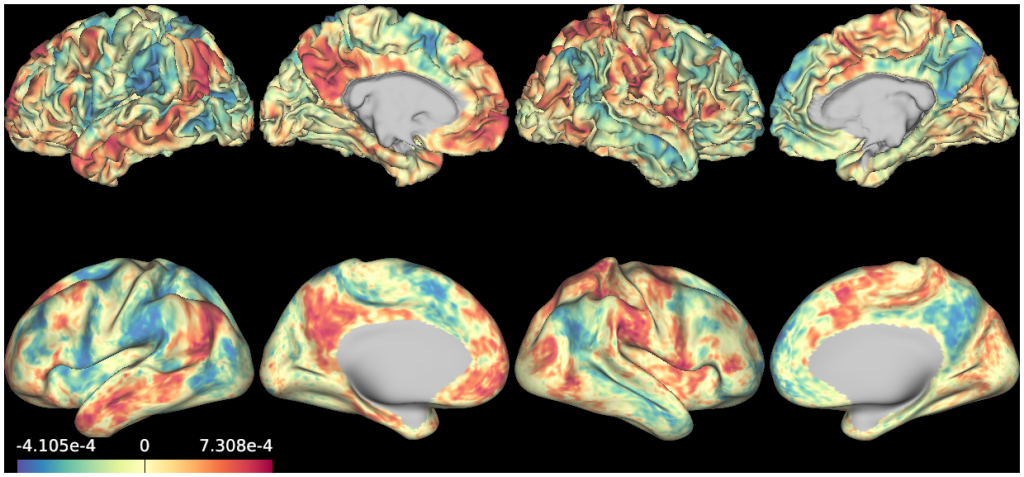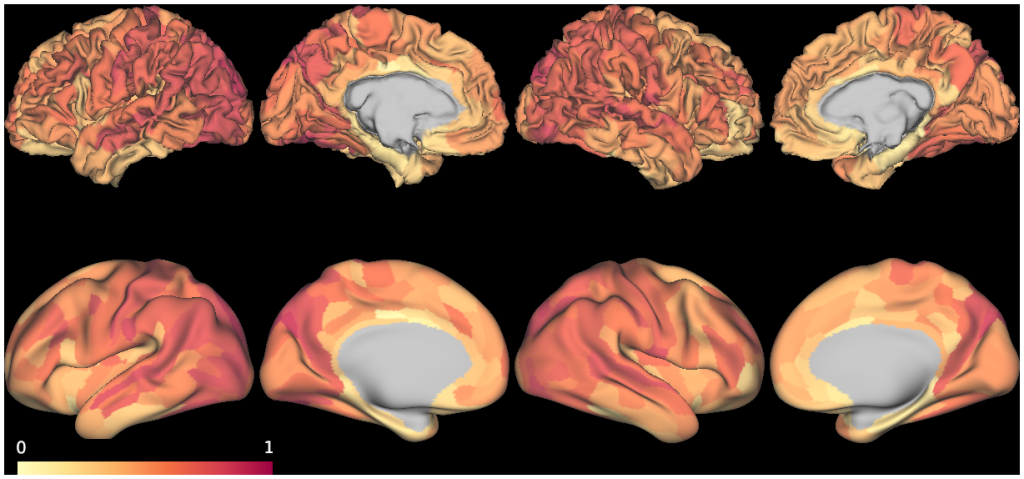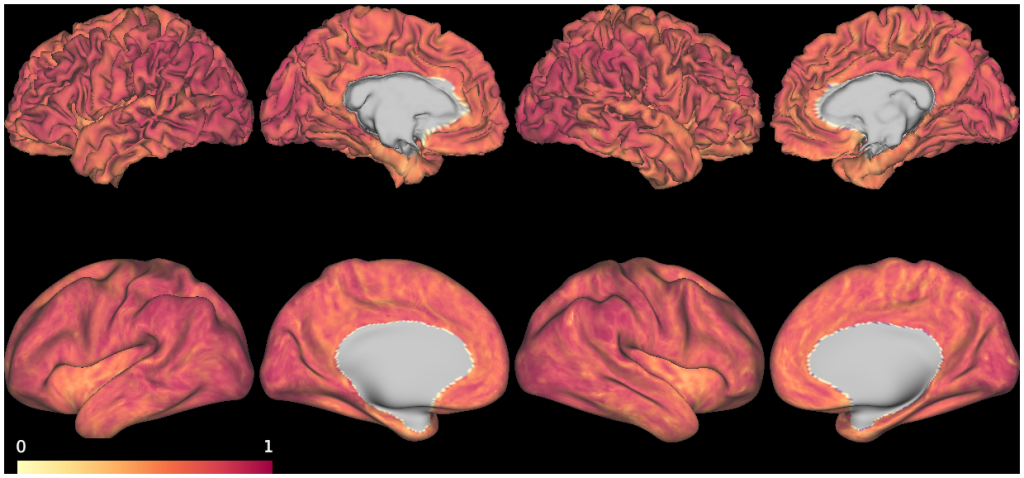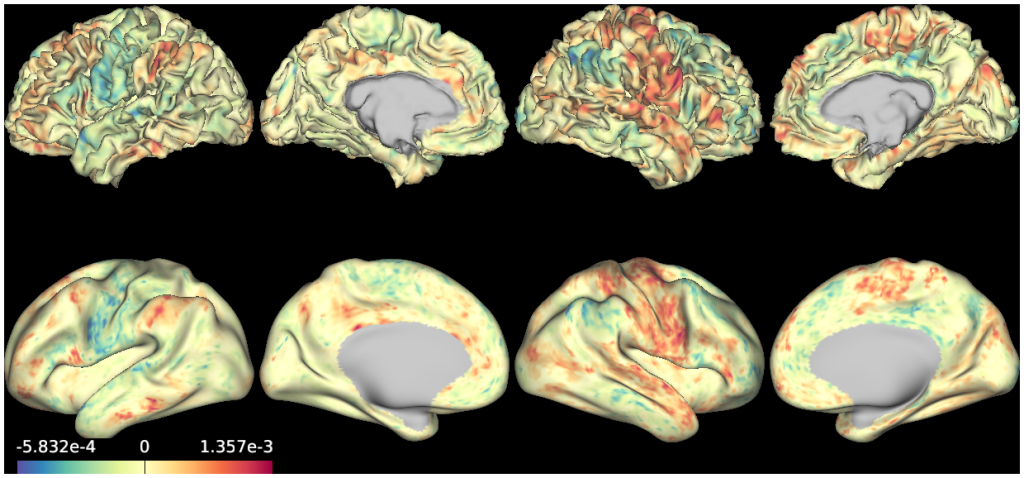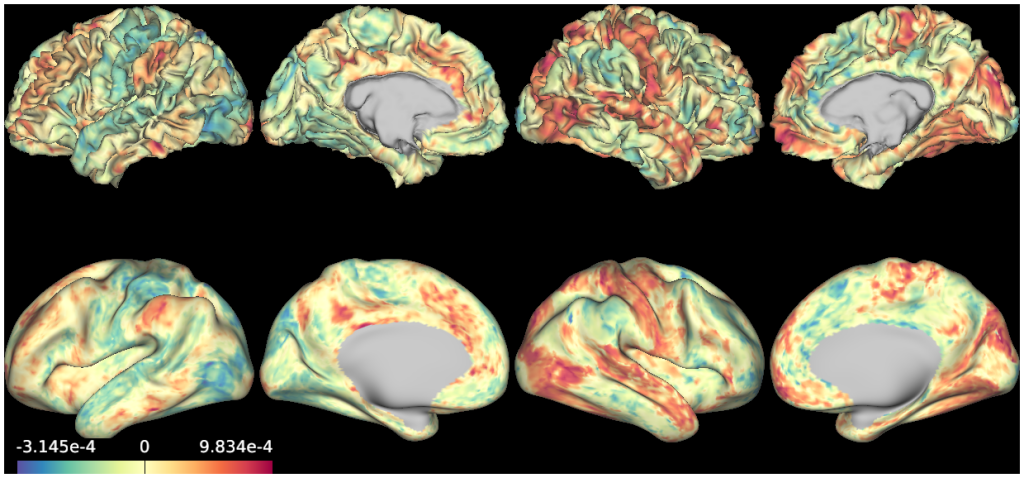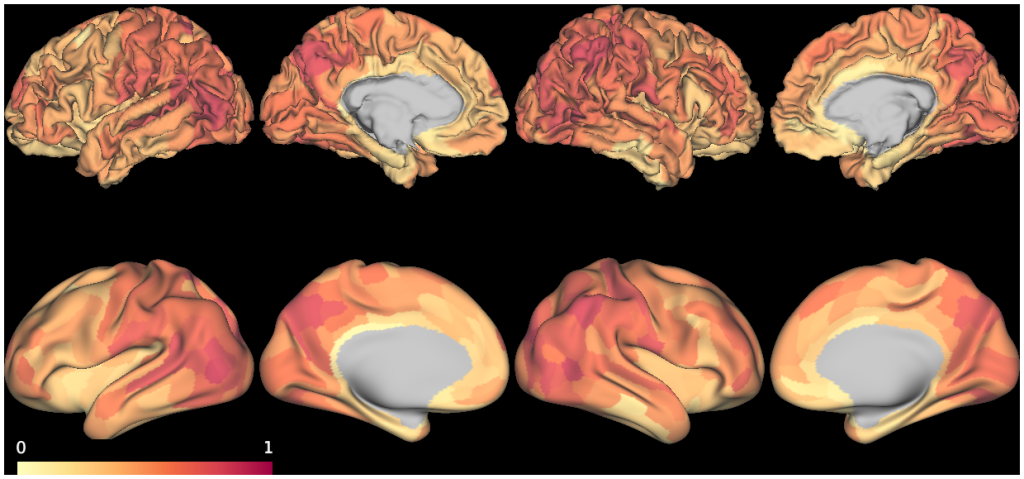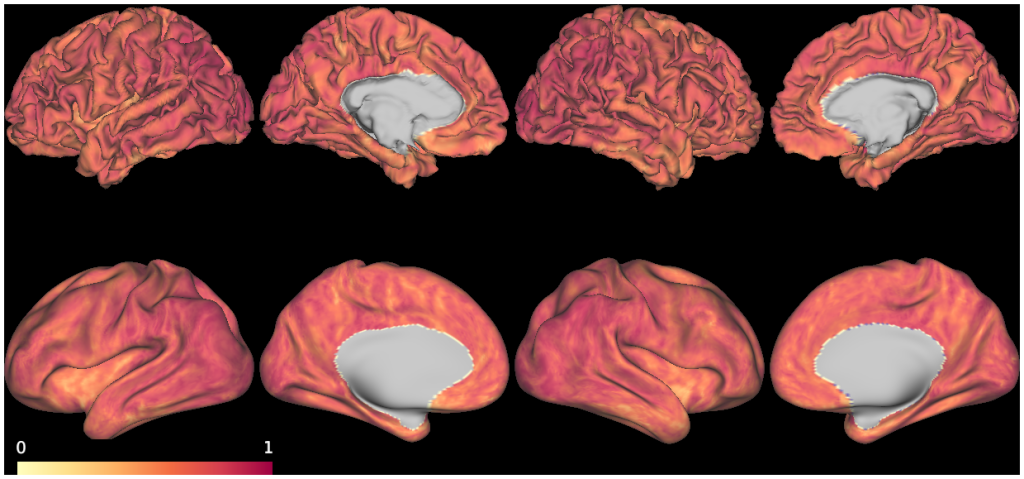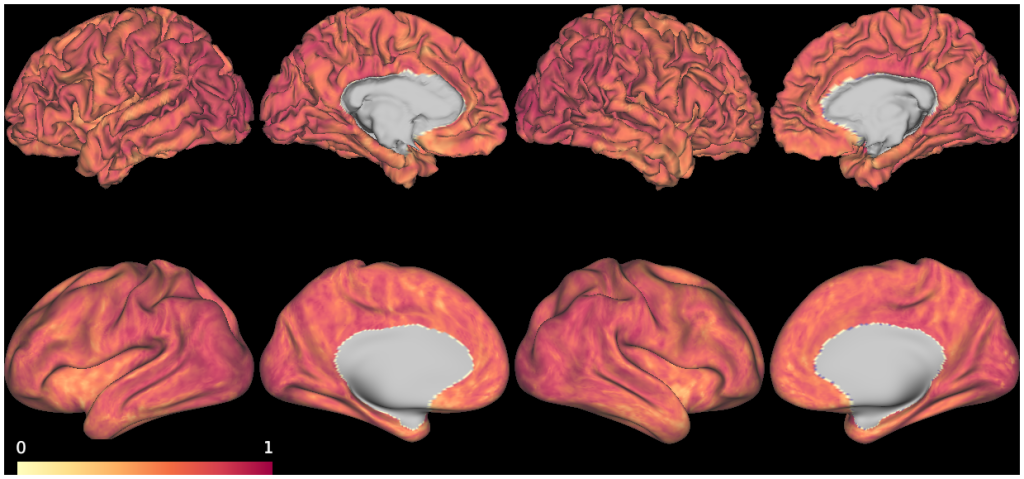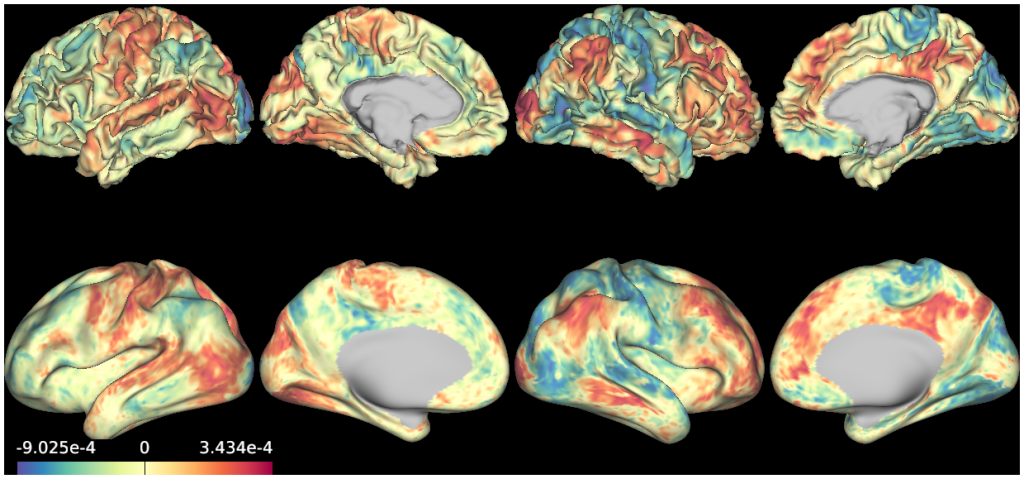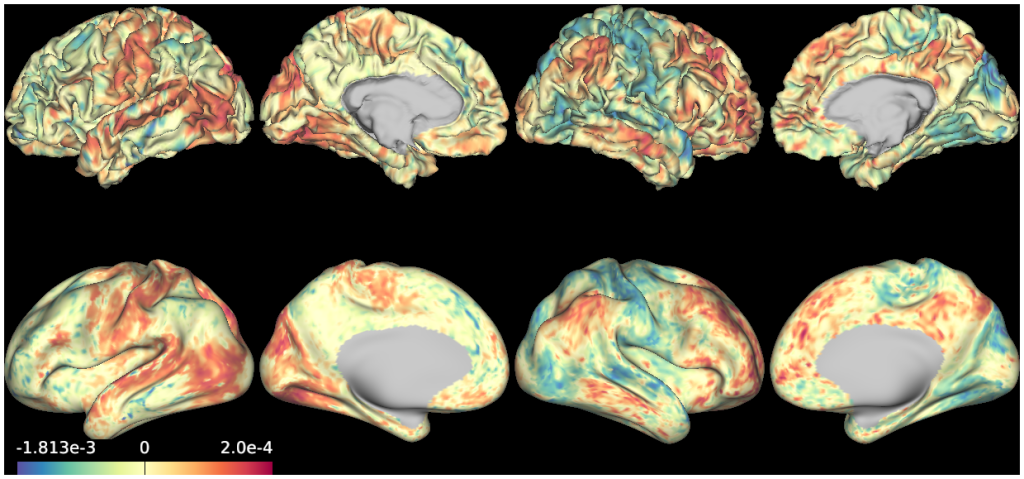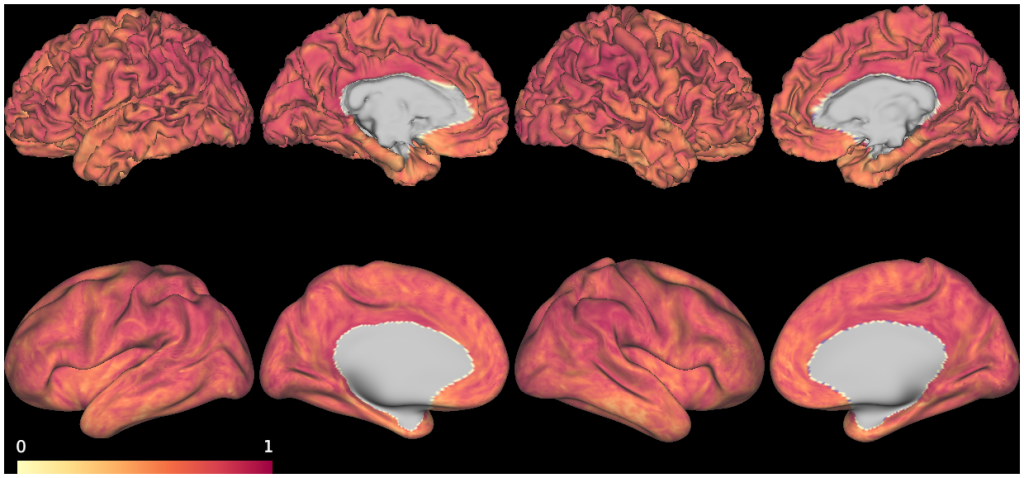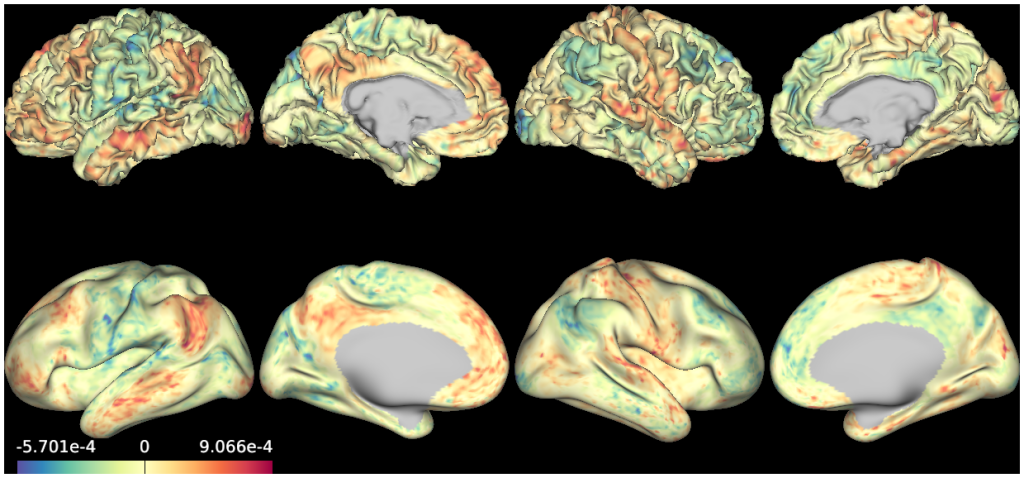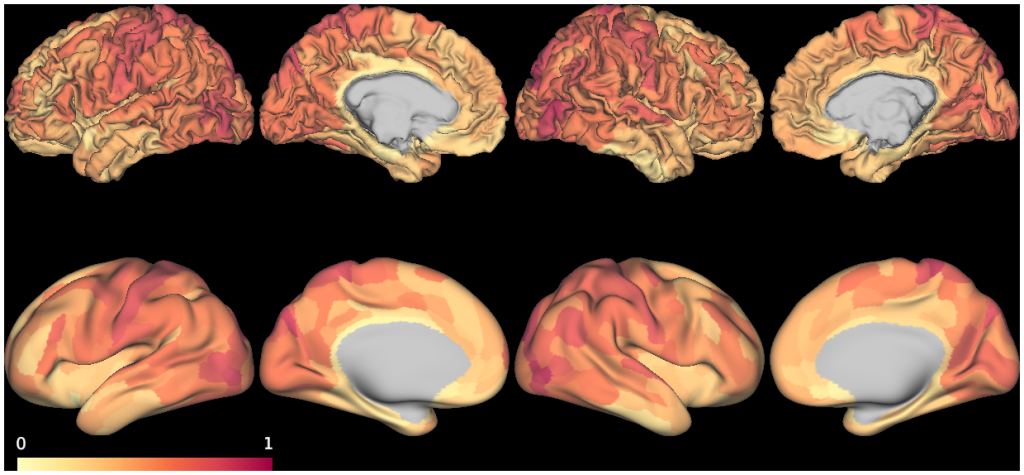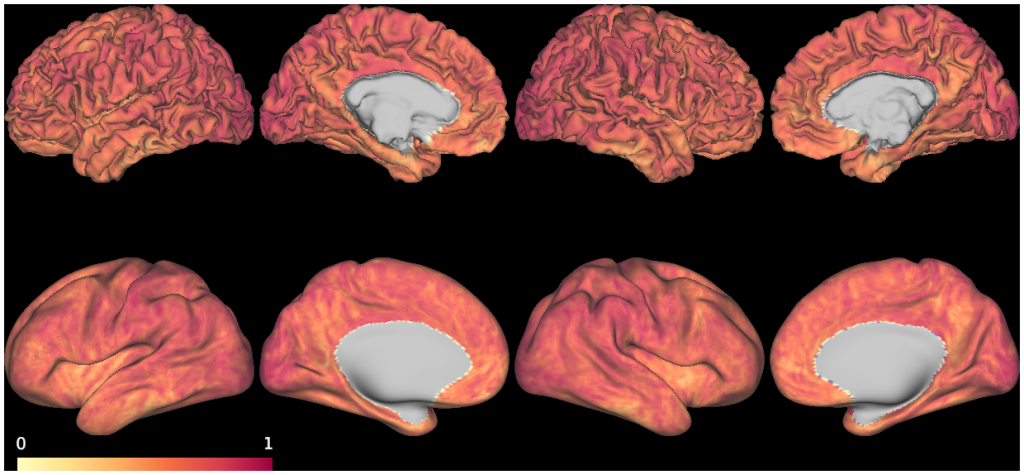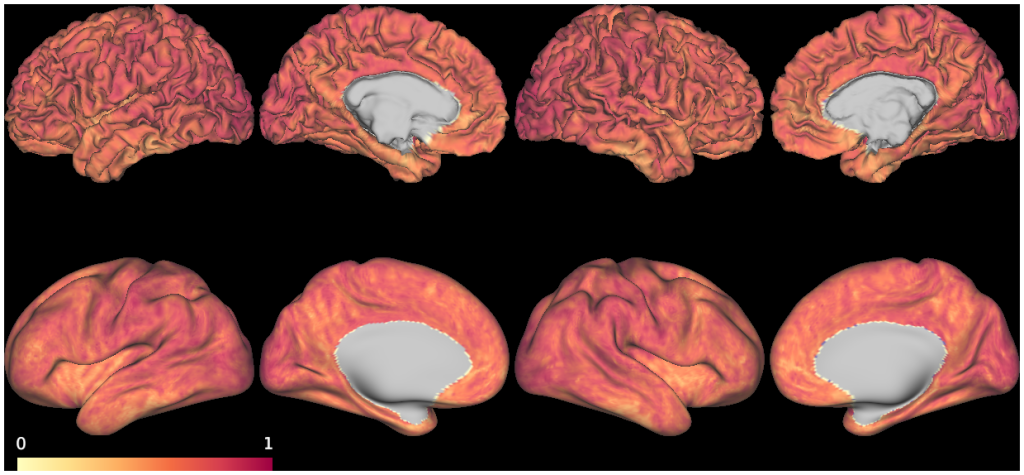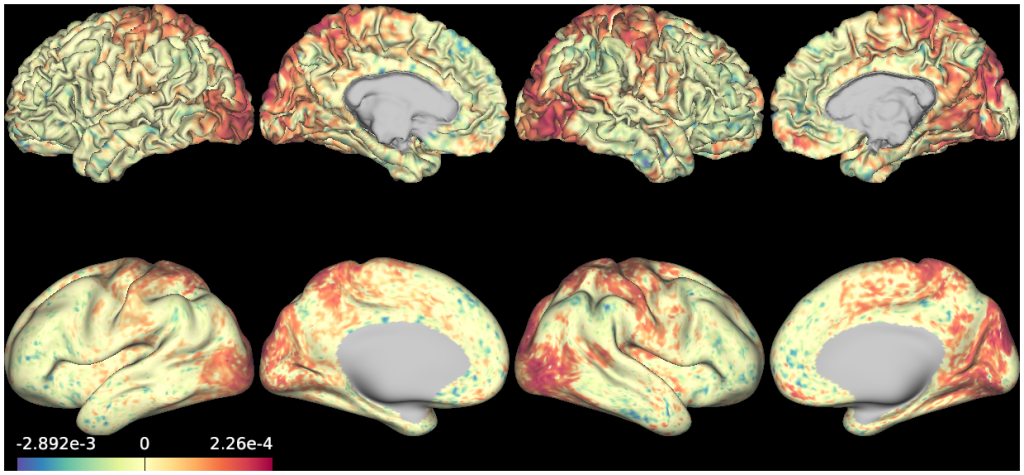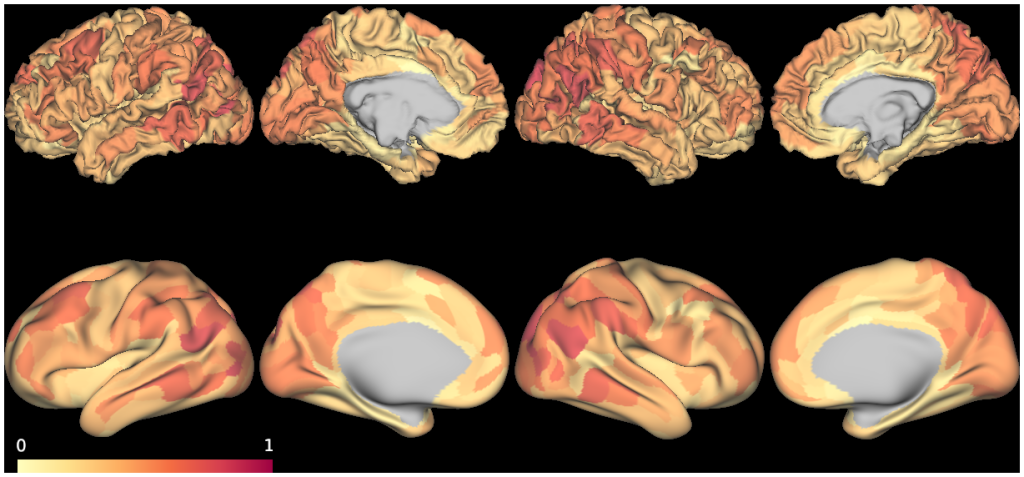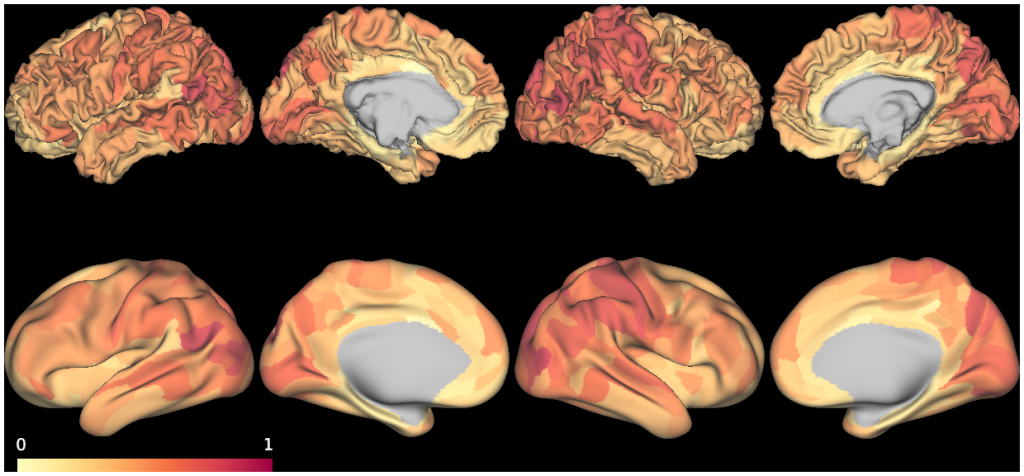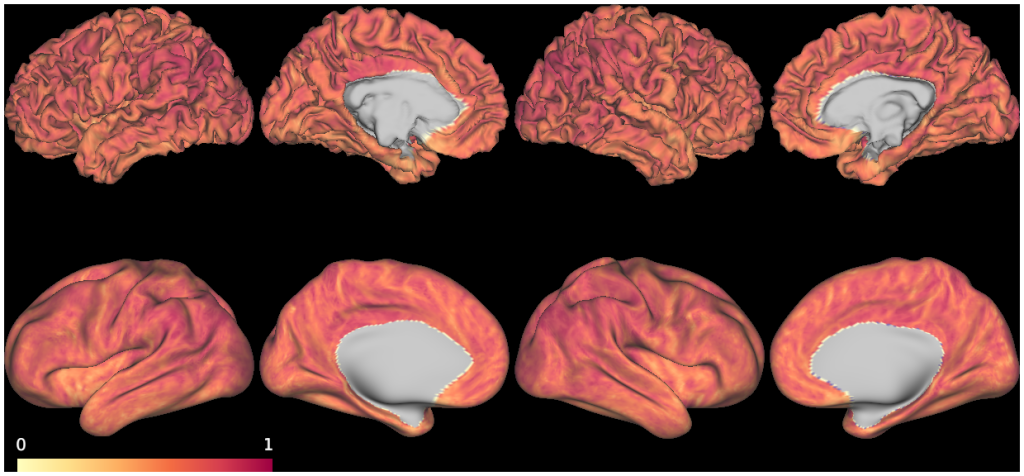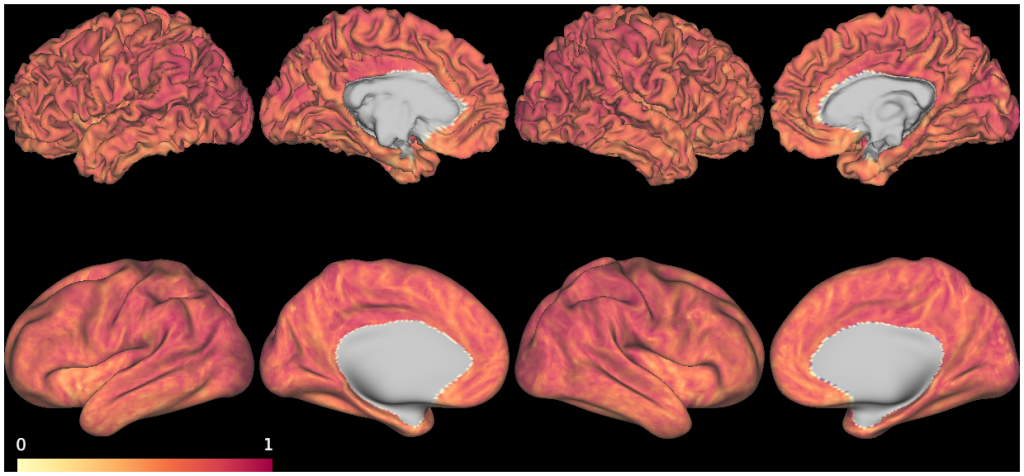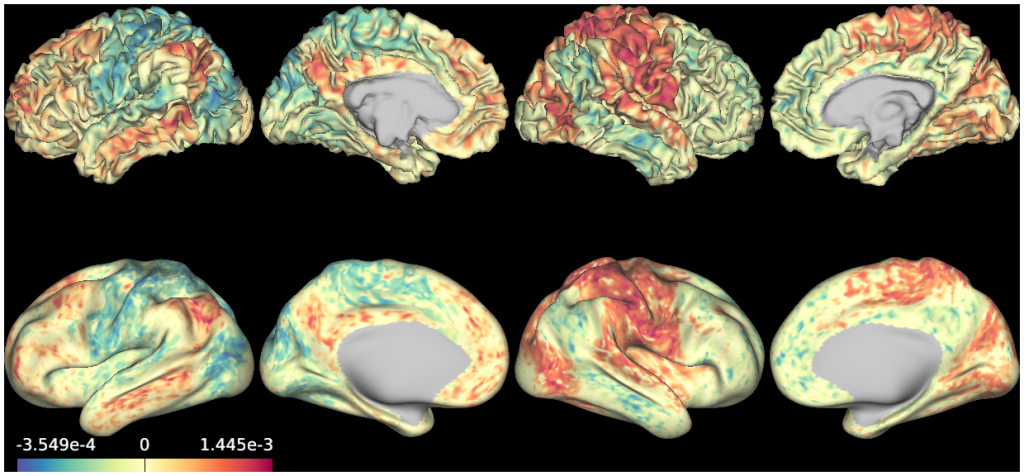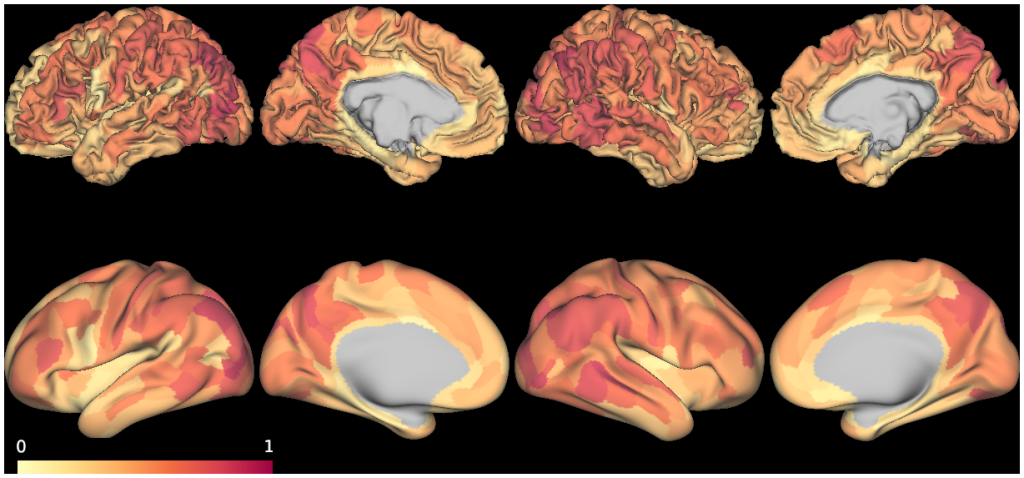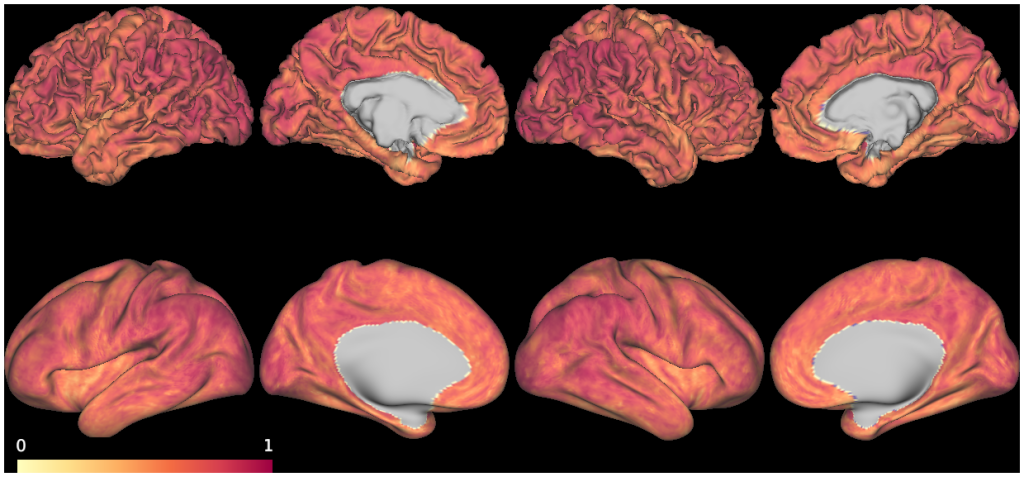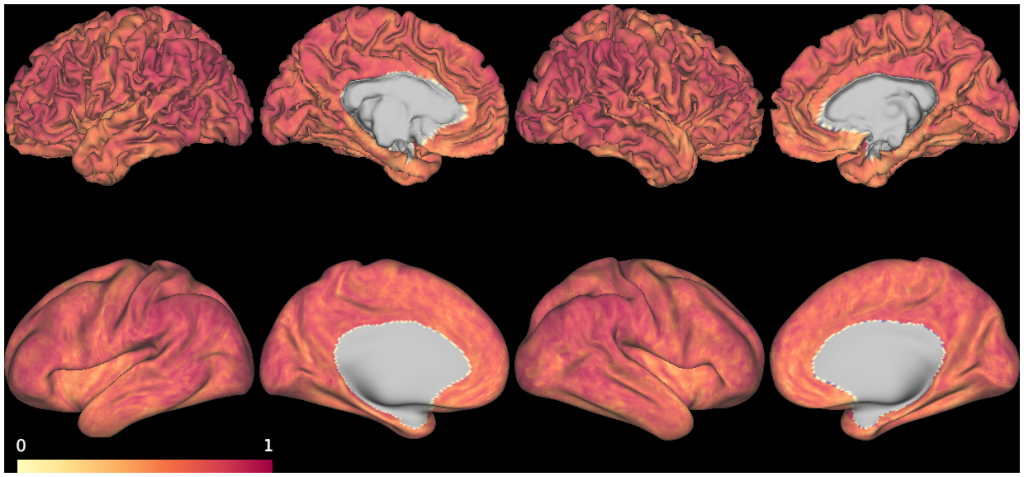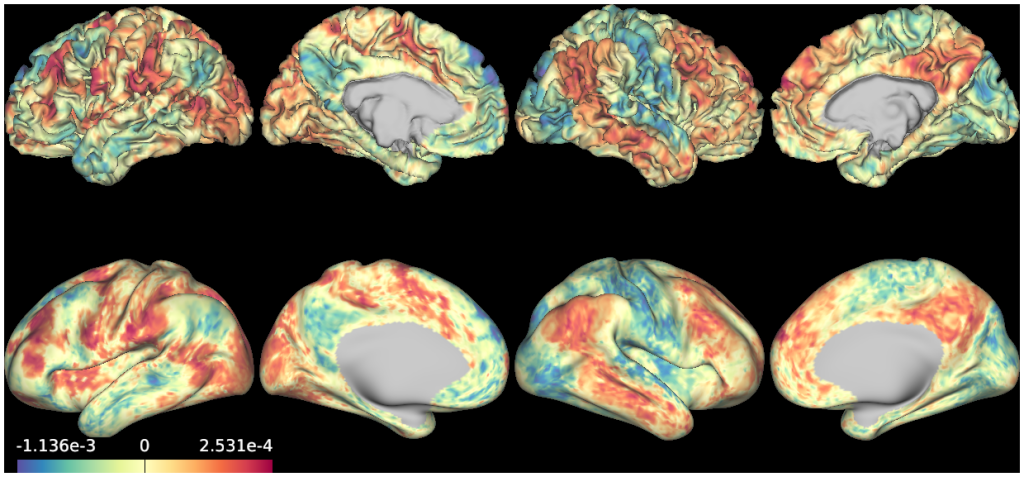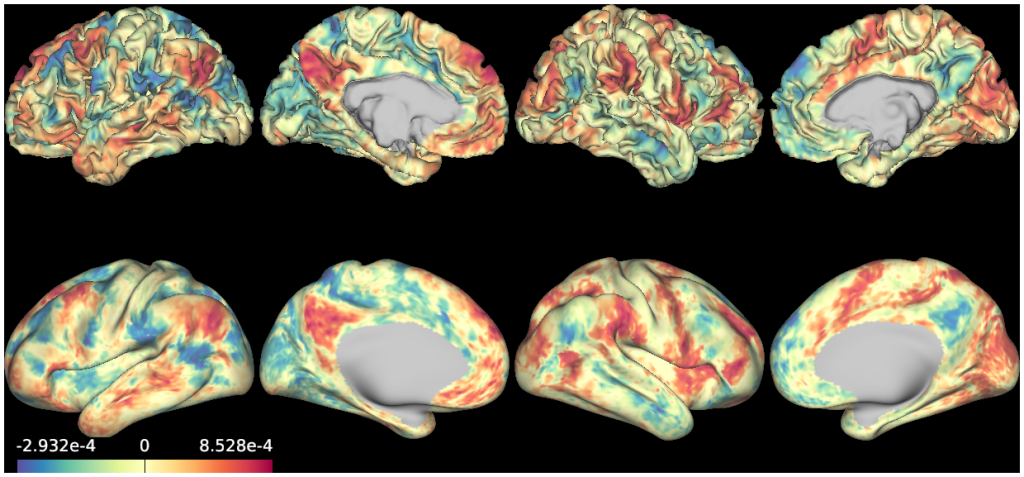FULL TITLE:
A tutorial and tool for exploring feature similarity gradients with MRI data
SPECIES:
Human
DESCRIPTION:
This BALSA database contains the results from the Bajada (2020) article that introduces the VB Index and provides a tool for computing it. The scenes "group.scene" and "SyntheticData.scene" contain the major images found in the article. The rest of the scenes show individual results.
Note that while the VB Index in the group scene is scaled from 2% to 98% the individual scenes have the full range of VB Index from zero to one, this can be changed within the settings tab in wb_view.
The software for reproducing these maps can be found here: https://github.com/VBIndex
ABSTRACT:
There has been an increasing interest in examining organisational principles of the cerebral cortex (and subcortical regions) using different MRI features such as structural or functional connectivity. Despite the widespread interest, introductory tutorials on the underlying technique targeted for the novice neuroimager are sparse in the literature.
Articles that investigate various “neural gradients” (for example based on region studied “cortical gradients,” “cerebellar gradients,” “hippocampal gradients” etc … or feature of interest “functional gradients,” “cytoarchitectural gradients,” “myeloarchitectural gradients” etc…) have increased in popularity. Thus, we believe that it is opportune to discuss what is generally meant by “gradient analysis”. We introduce basics concepts in graph theory, such as graphs themselves, the degree matrix, and the adjacency matrix. We discuss how one can think about gradients of feature similarity (the similarity between timeseries in fMRI, or streamline in tractography) using graph theory and we extend this to explore such gradients across the whole MRI scale; from the voxel level to the whole brain level. We proceed to introduce a measure for quantifying the level of similarity in regions of interest. We propose the term “the Vogt-Bailey index” for such quantification to pay homage to our history as a brain mapping community.
We run through the techniques on sample datasets including a brain MRI as an example of the application of the techniques on real data and we provide several appendices that expand upon details. To maximise intuition, the appendices contain a didactic example describing how one could use these techniques to solve a particularly pernicious problem that one may encounter at a wedding. Accompanying the article is a tool, available in both MATLAB and Python, that enables readers to perform the analysis described in this article on their own data.
PUBLICATION:
NeuroImage
- DOI:
10.1016/j.neuroimage.2020.117140
- Claude J. Bajada
- Lucas Q. Costa Campos
- Svenja Caspers
- Richard Muscat
- Geoff J. M. Parker
- Matthew A. Lambon Ralph
- Lauren L. Cloutman
- Nelson J. Trujillo-Barreto
- University of Manchester
- University of Cambridge
- University College London
- Forschungszentrum Jülich
- University of Malta
-
group.scene
SCENES: -
SyntheticData.scene
SCENES: -
101309.scene
SCENES: -
102311.scene
SCENES: -
103111.scene
SCENES: -
106016.scene
SCENES: -
108525.scene
SCENES: -
110411.scene
SCENES: -
111009.scene
SCENES: -
111413.scene
SCENES: -
112920.scene
SCENES: -
115320.scene
SCENES: -
118528.scene
SCENES: -
120515.scene
SCENES: -
123925.scene
SCENES: -
124220.scene
SCENES: -
126628.scene
SCENES: -
127327.scene
SCENES: -
131217.scene
SCENES: -
132118.scene
SCENES: -
133019.scene
SCENES: -
135225.scene
SCENES: -
136833.scene
SCENES: -
146432.scene
SCENES: -
148941.scene
SCENES: -
150625.scene
SCENES:


